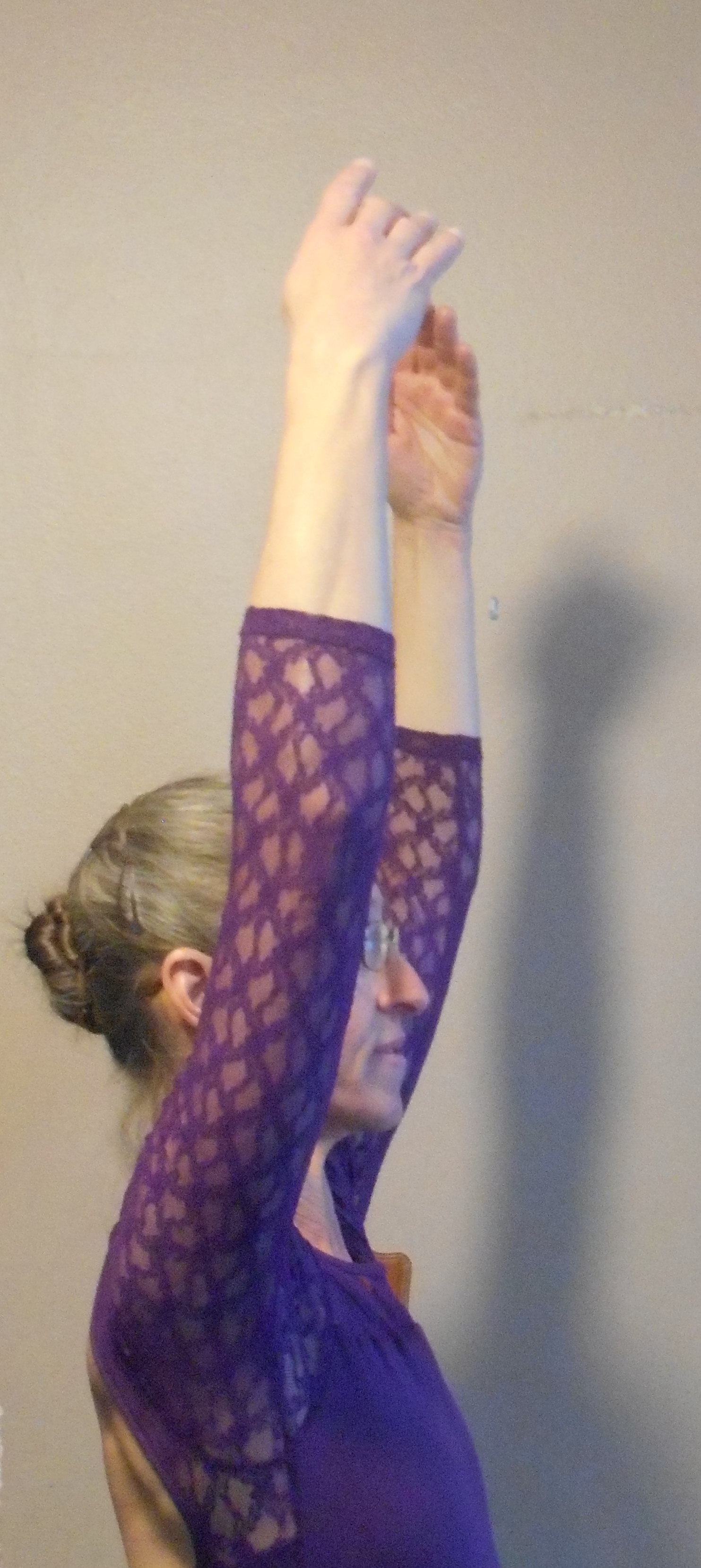Zombie, Doll, Swan or Human - It's all in the arms!
A beautiful fluid port de bras (“carriage of the arms”) that emanates from the back and expresses the soul of the movement is the finishing touch that transforms an accomplished dancer into an exceptional artist. Port de bras can assist or hinder a dancer’s turns and jumps. They can make a dancer look powerful, graceful and elegant if used well, or make the dancer look weak, lazy and amateur if used poorly. They can transform the artist from human to swan or whatever the character may be. From the beginning student to the advanced dancer, attention paid to the arms and hands is essential.
In this article, we will look at the basic arm positions – pitfalls to watch out for, and pointers to keep in mind. We will attend to many fine details down to the shape and arrangement of your fingers and the rotation of the joints of the arms. How the arms are held in any position gives an air of strength, confidence and energy or of weakness, laziness or uncertainty. Learning how to hold your arms properly in each position also encourages the proper use of muscles in the back and abdomen. Correct usage of the arms will enhance your jumps and turns, your partnering, and everything else in between and beyond!
Hands and Fingers
The basic ballet hand position is really just a formalization and extension of what is a rather natural relaxed position of the hand. The fingers should be very gently, subtly curved – never absolutely straight, unless you are dancing a robot dance or something of the like! The pointing finger is extended furthest open while the thumb is softly flattened in towards the pointing and middle fingers (not touching these fingers). Try to avoid the “hamburger” hold with the thumb! Most of the time, the middle, ring and pinky fingers should fan slightly outward with the middle finger furthest inward. The carpal joints closest to the palm of the hand should be very close together, maybe even touching, such that the fingers do NOT separate widely as in a spasmed “jazz” hand. This same set of carpal joints should be just gently curved out from the palm of the hand, such that they complement the curves of the rest of the arm, not sharply bent in causing an angular look.
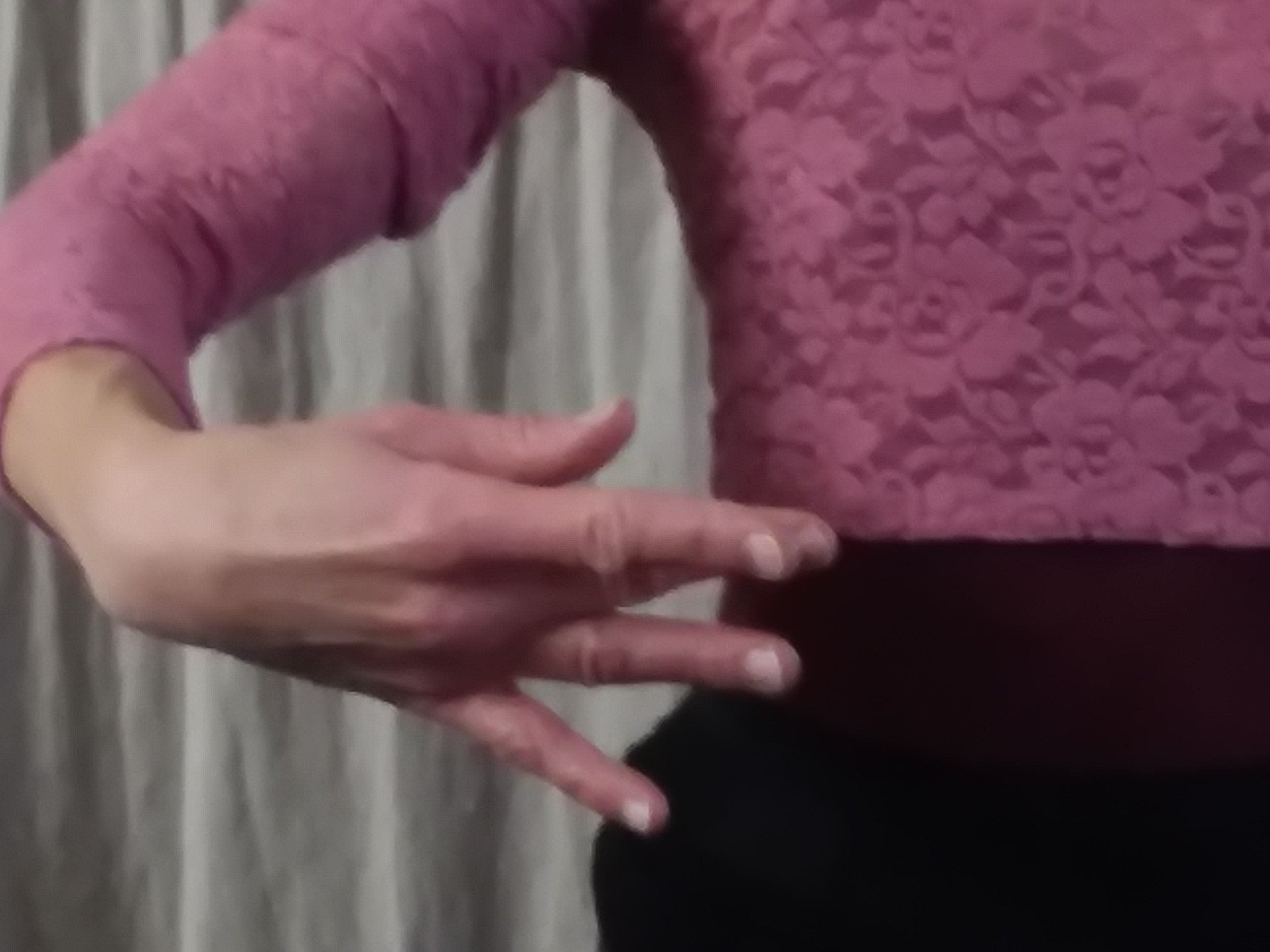
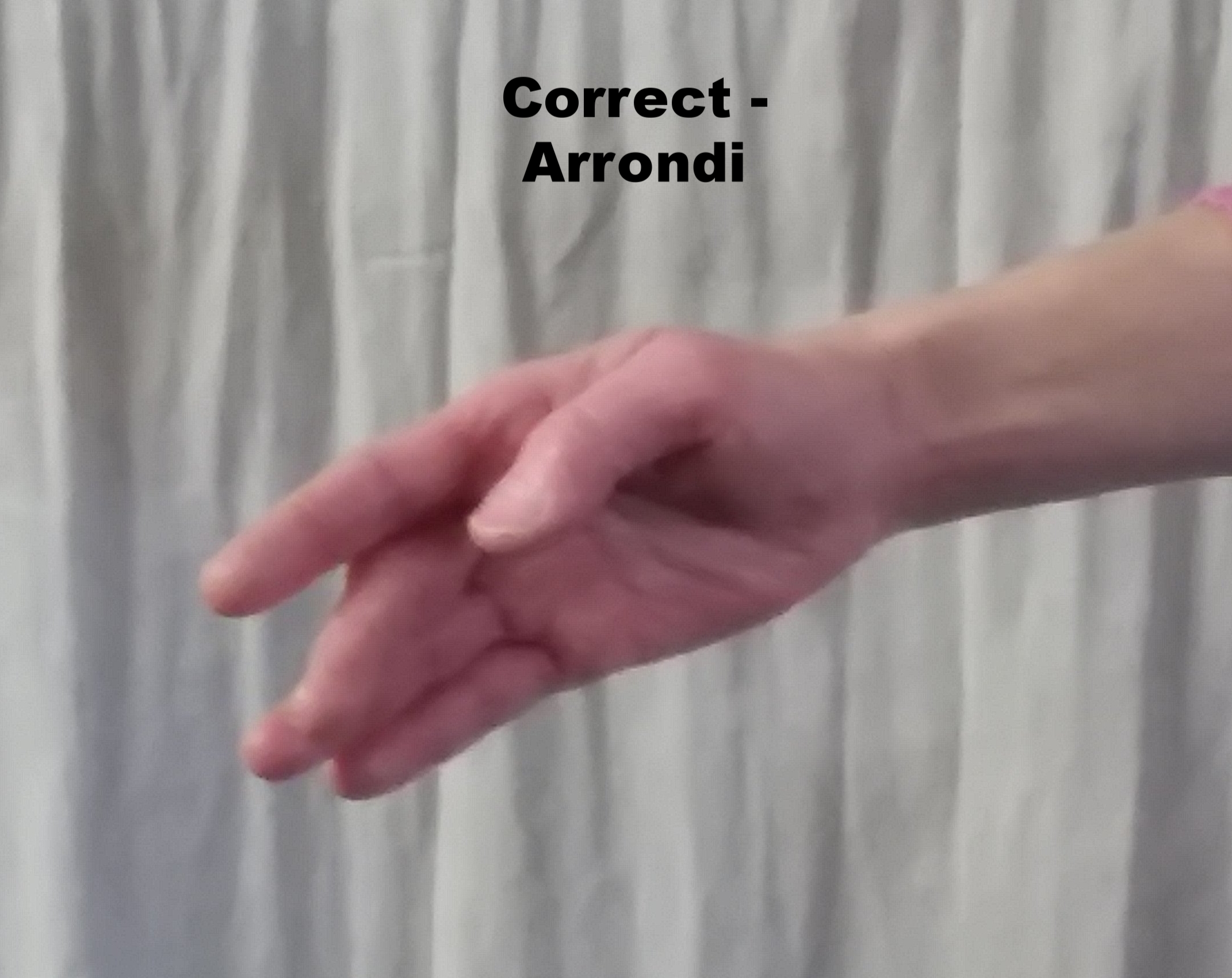

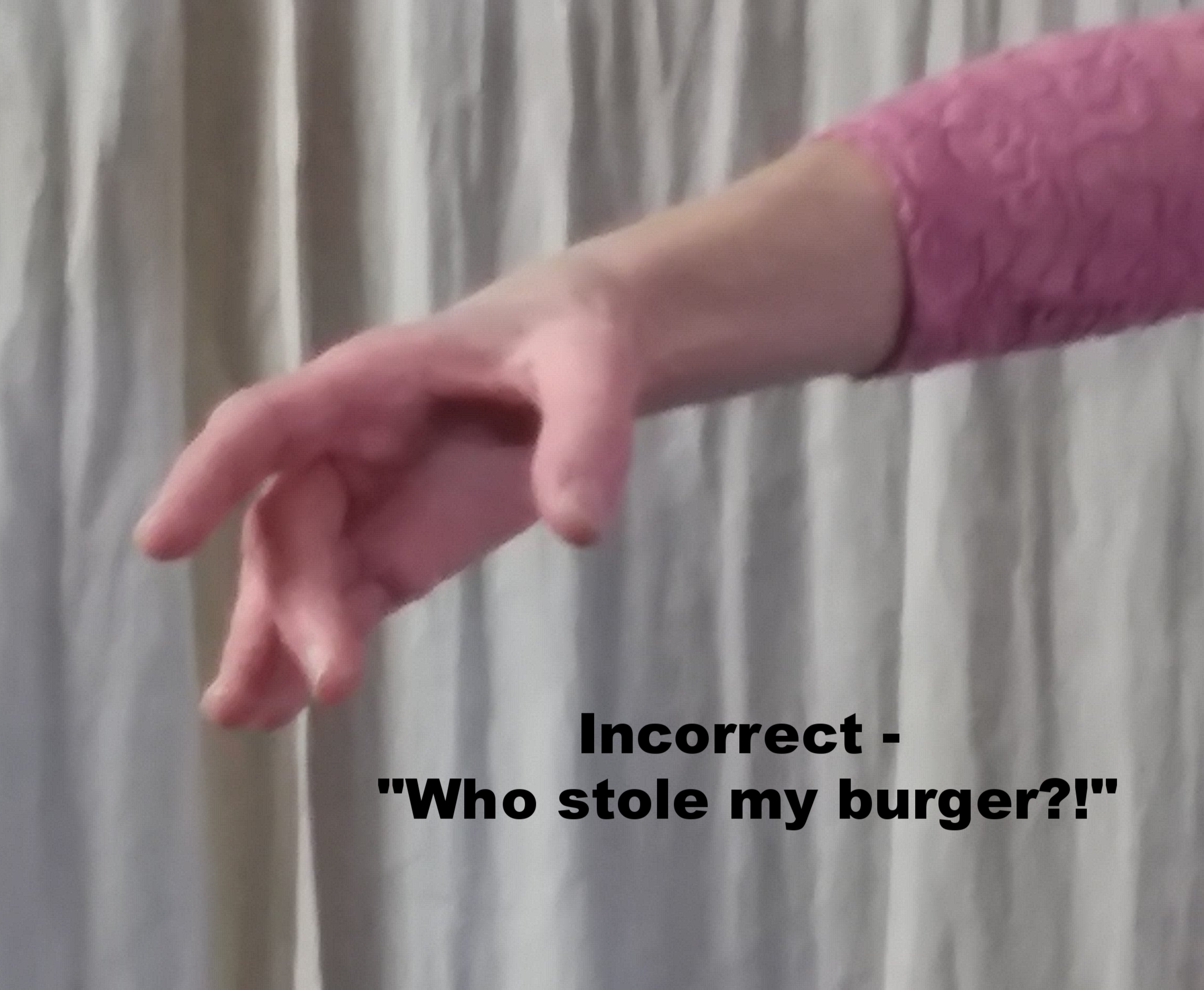
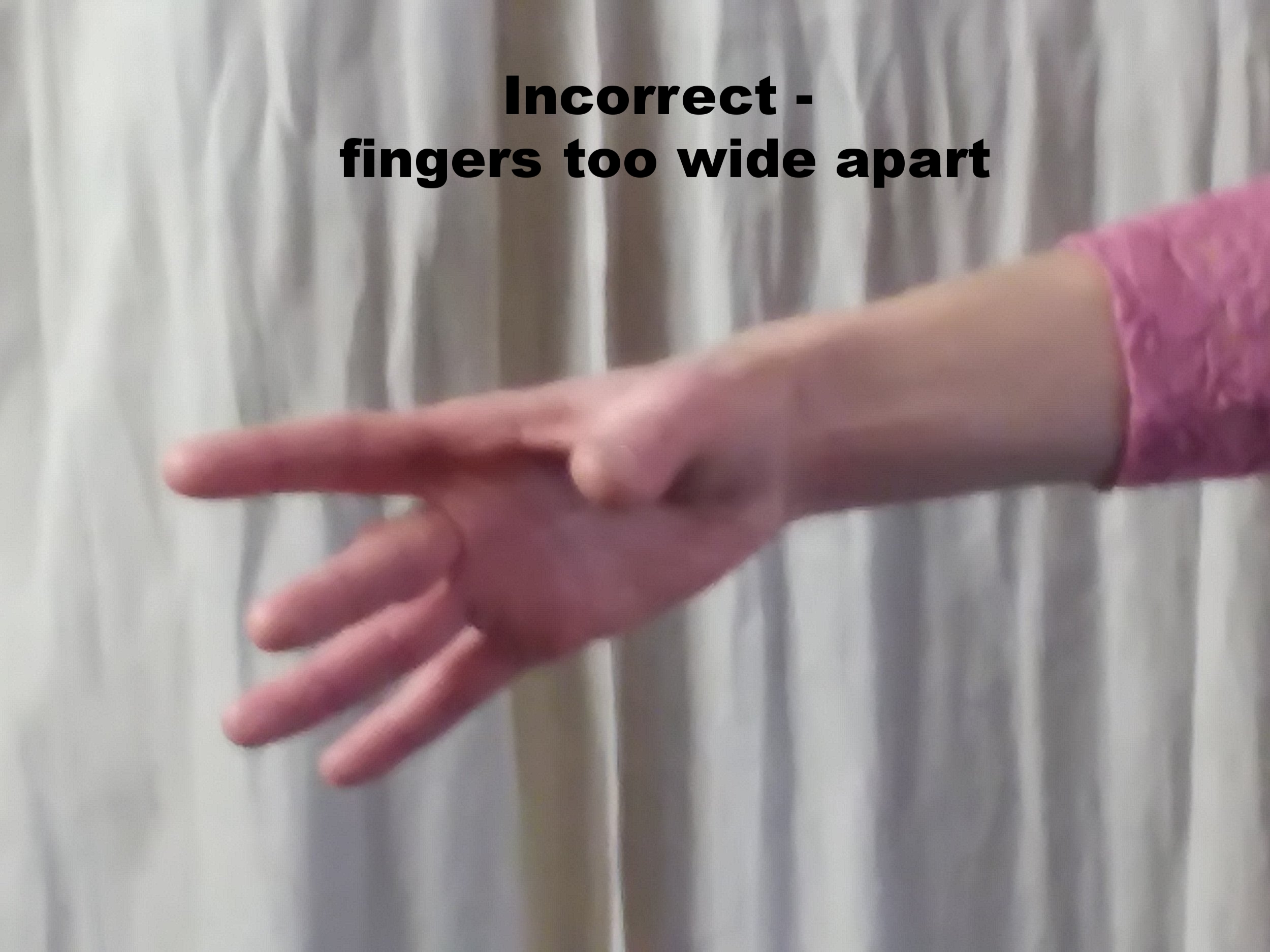
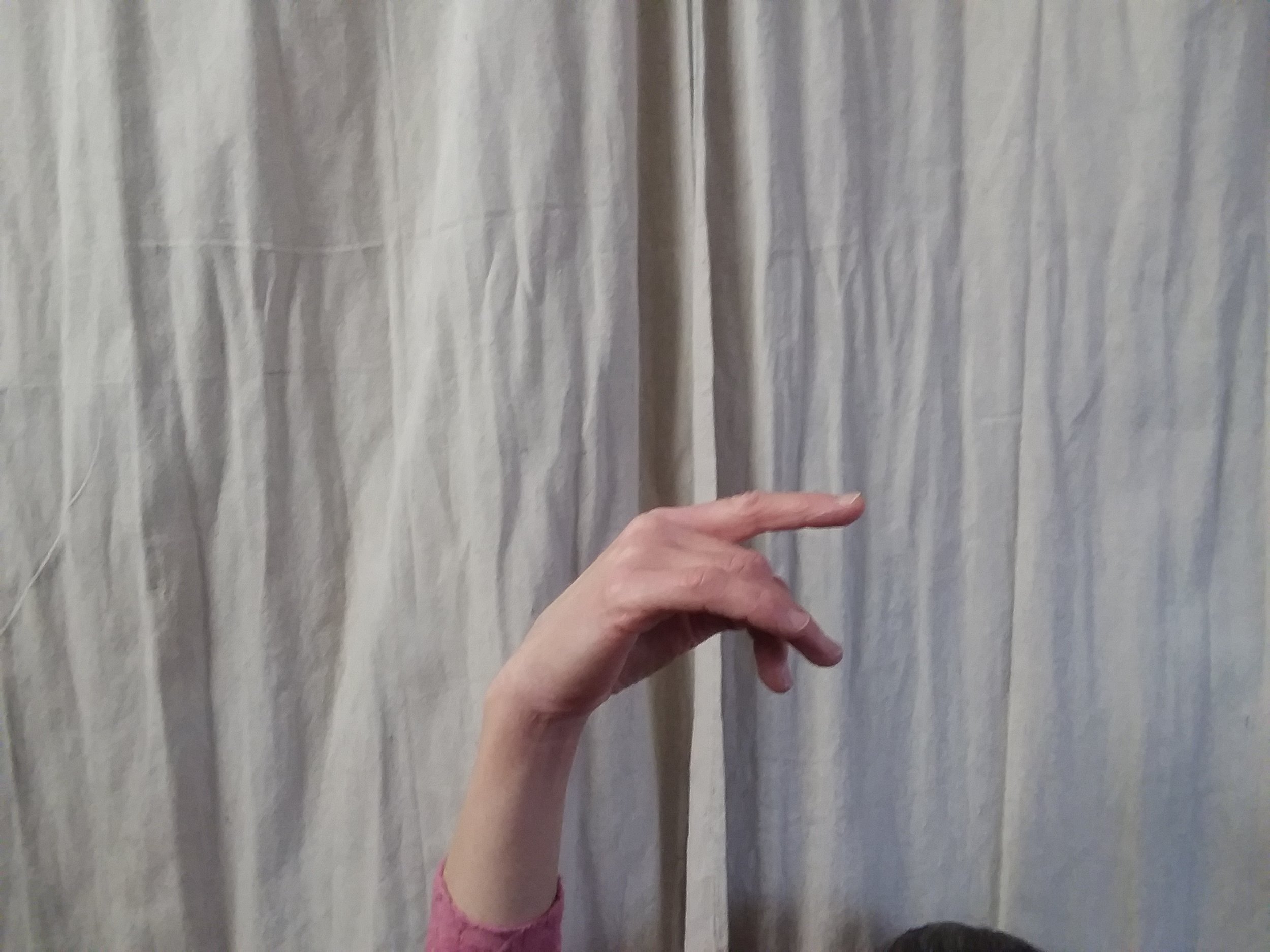
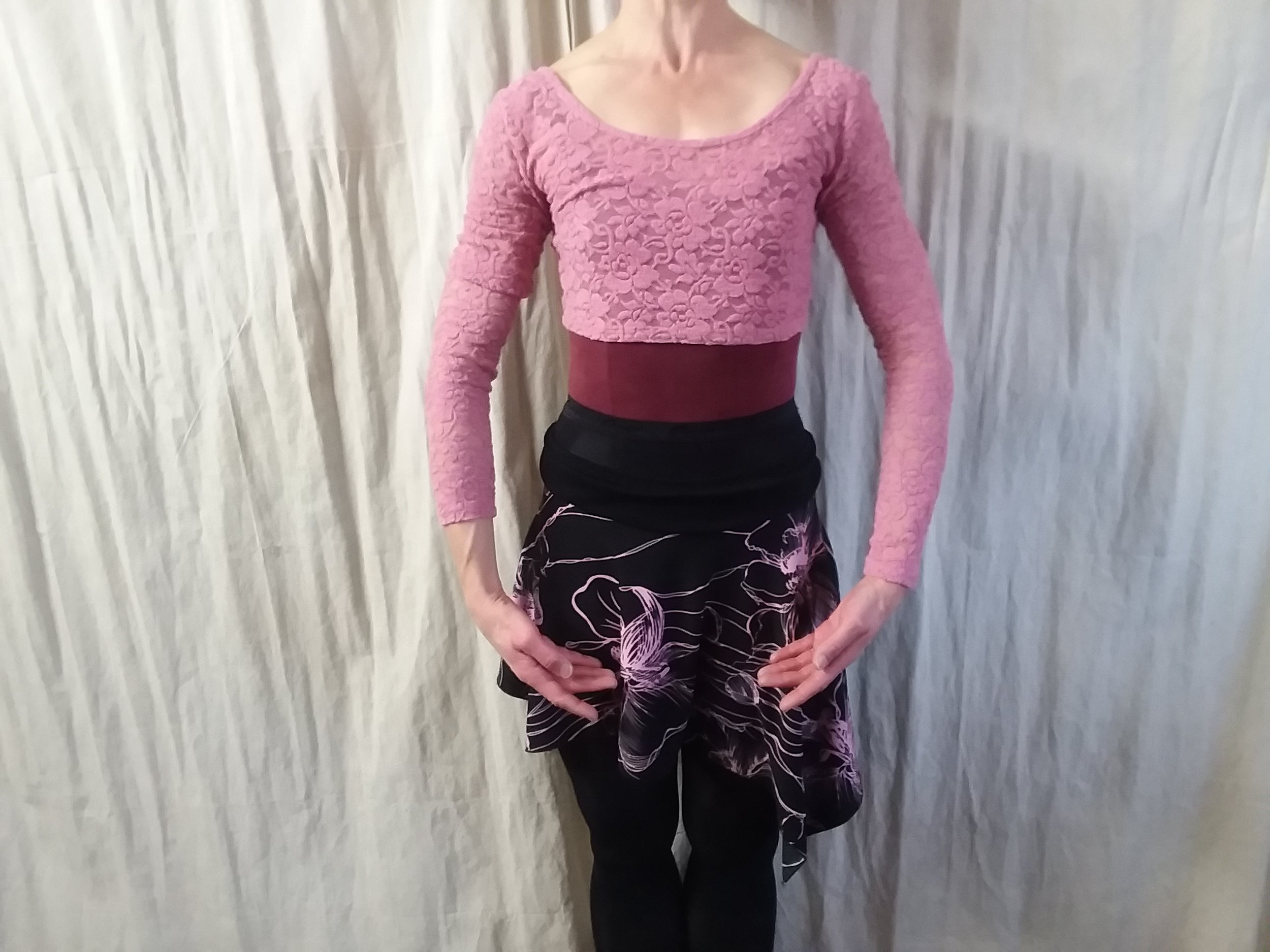

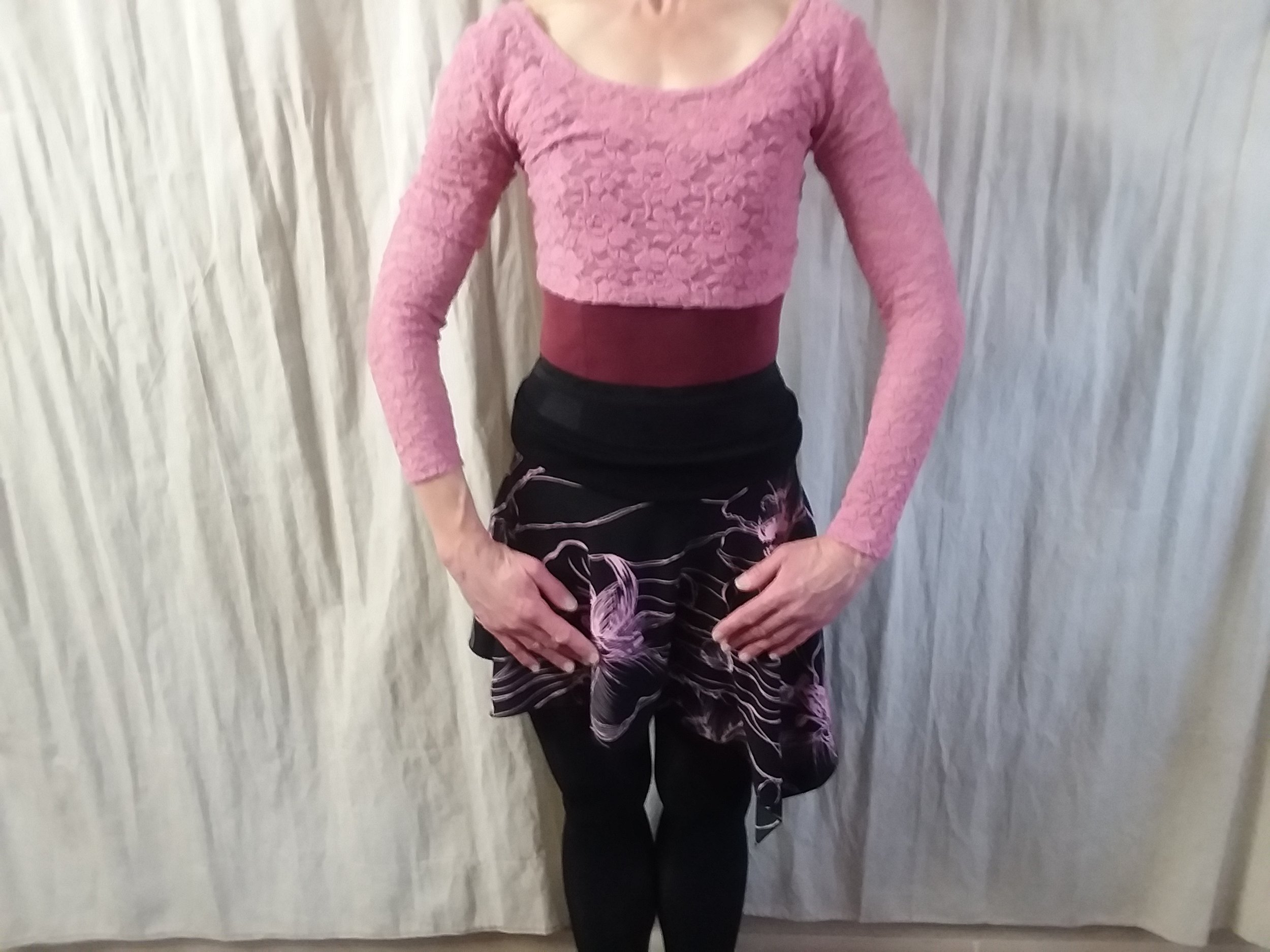
Basic Arm Positions
Preparatory (also commonly known as “low 5th” in Cecchetti training, or as “bras bas”)
The arms form an oval shape with the pinky fingers just in front of the thighs. There is a space about the width of one hand between the two hands – this distance varies slightly depending upon the style a particular studio uses, but never are the hands touching one another in this position. Palms of the hands are turned diagonally upward, not towards the thighs. The elbows are rotated forward giving space between the waistline and the arms and opening out the oval shape. Shoulders are rotated back.
First Position
The arms create a circular shape in first position with the hands across from the diaphragm. Elbows are lifted and open – higher than the wrists. Shoulders are again rotated down and back. Clavicles and scapula should feel as if they are held wide, not pinched. The palms of the hands are turned inward and slightly upward such that if you look down at your hands you should be looking into the palms. Some ballet styles teach first position as an oval shape, but this tends to close off the chest and causes an awkwardness in turns. A circular shape gives opportunity for expressiveness in the upper body while also creating a much more streamlined position for turns.
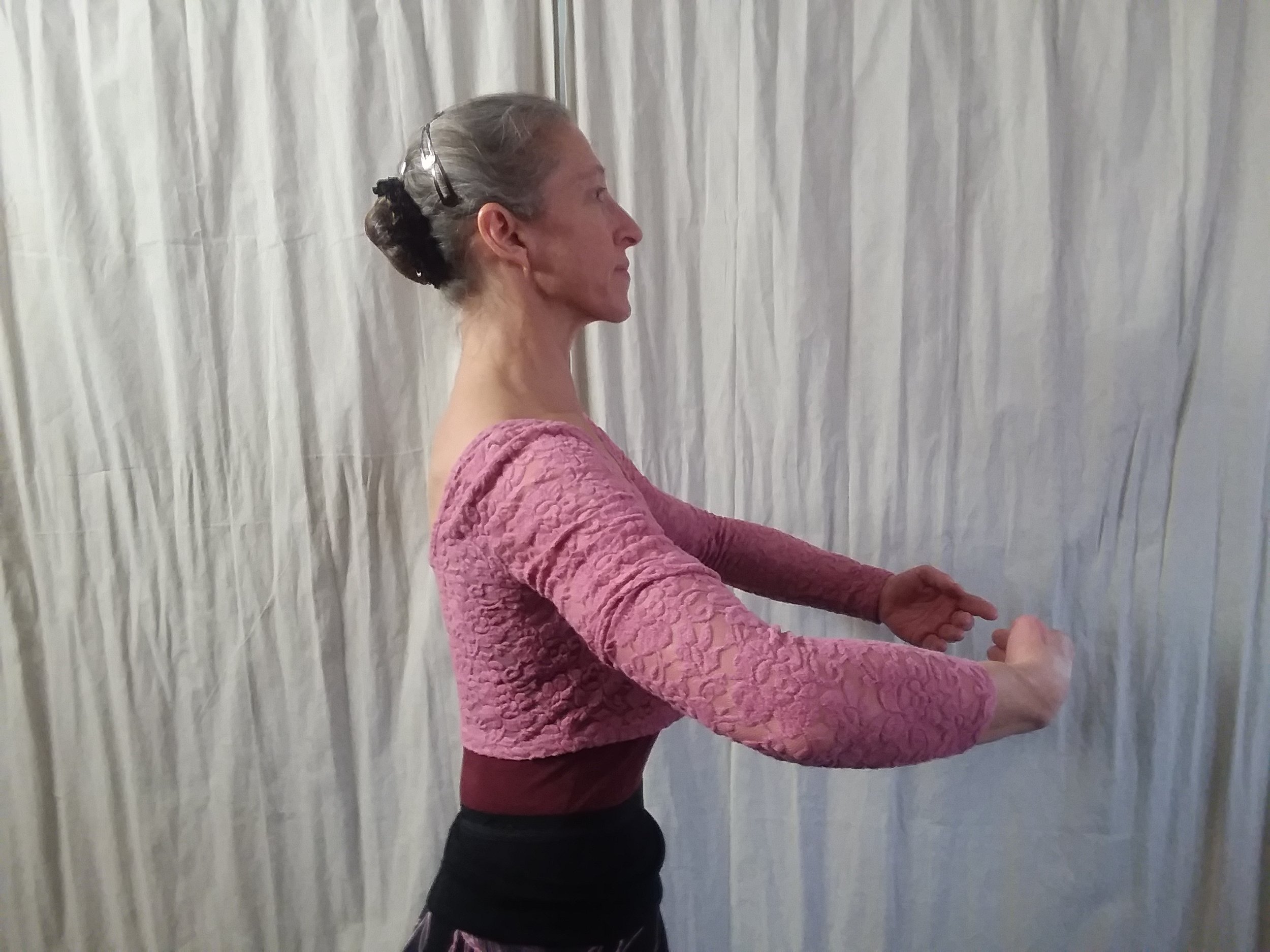
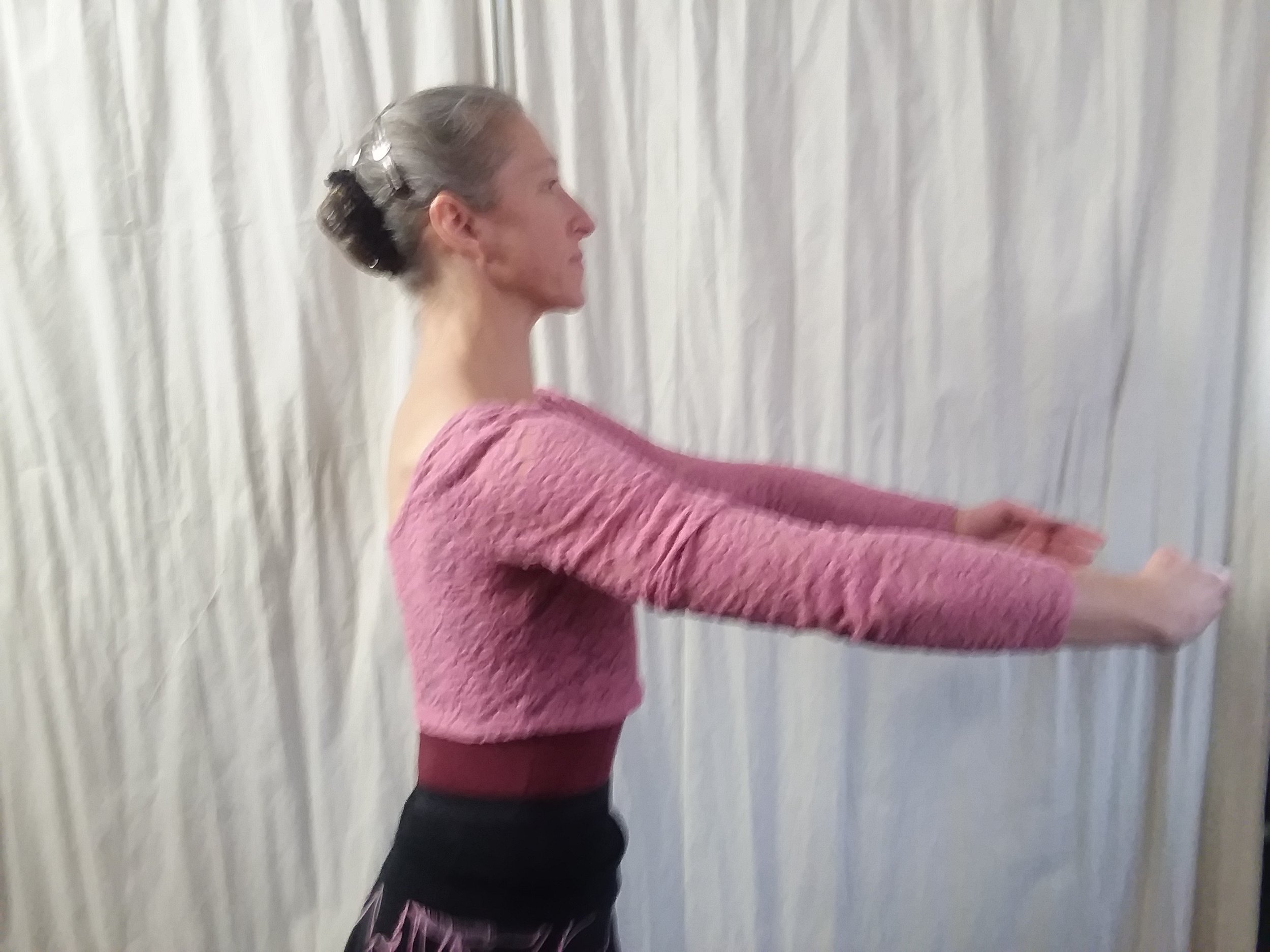
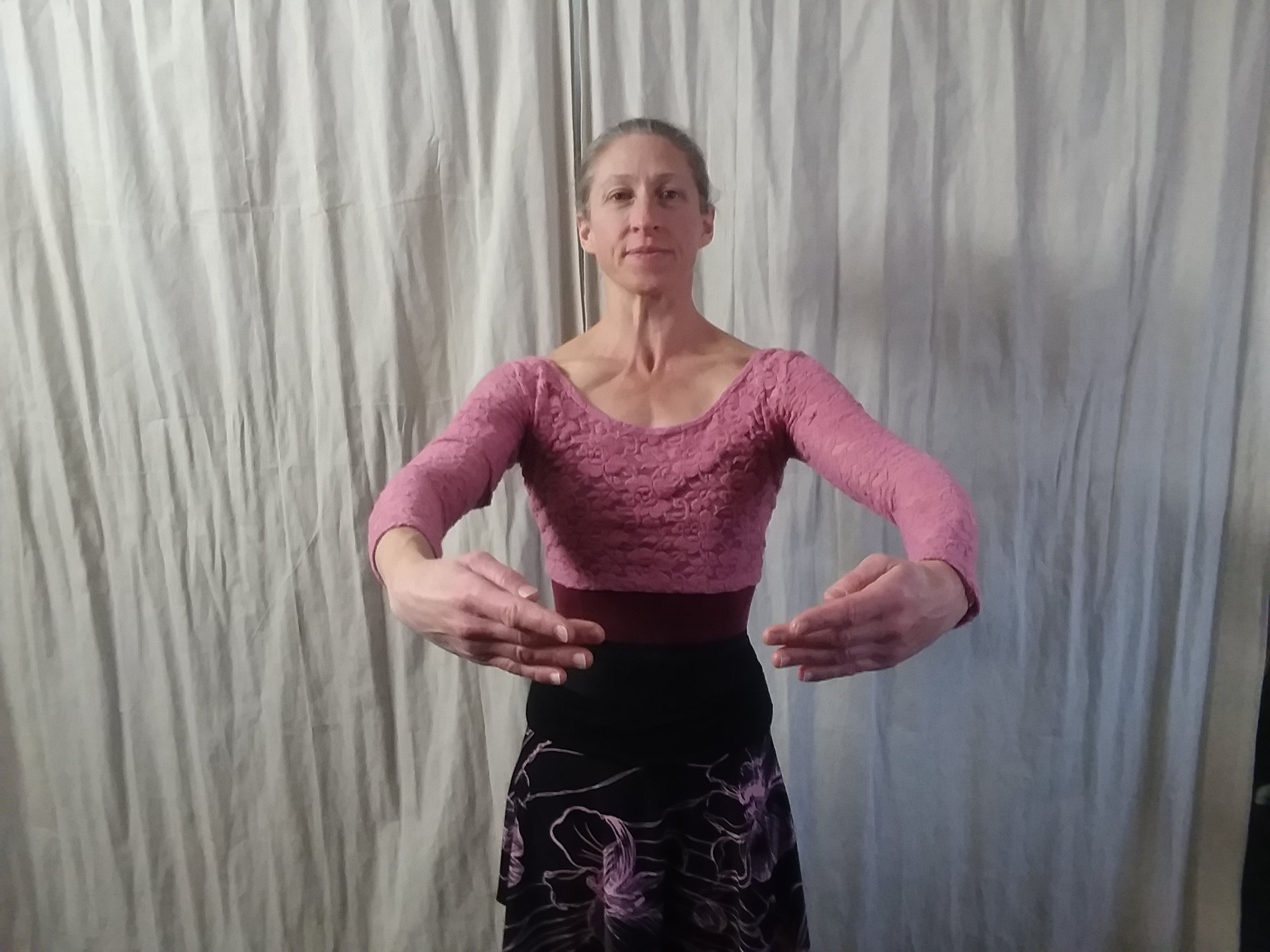
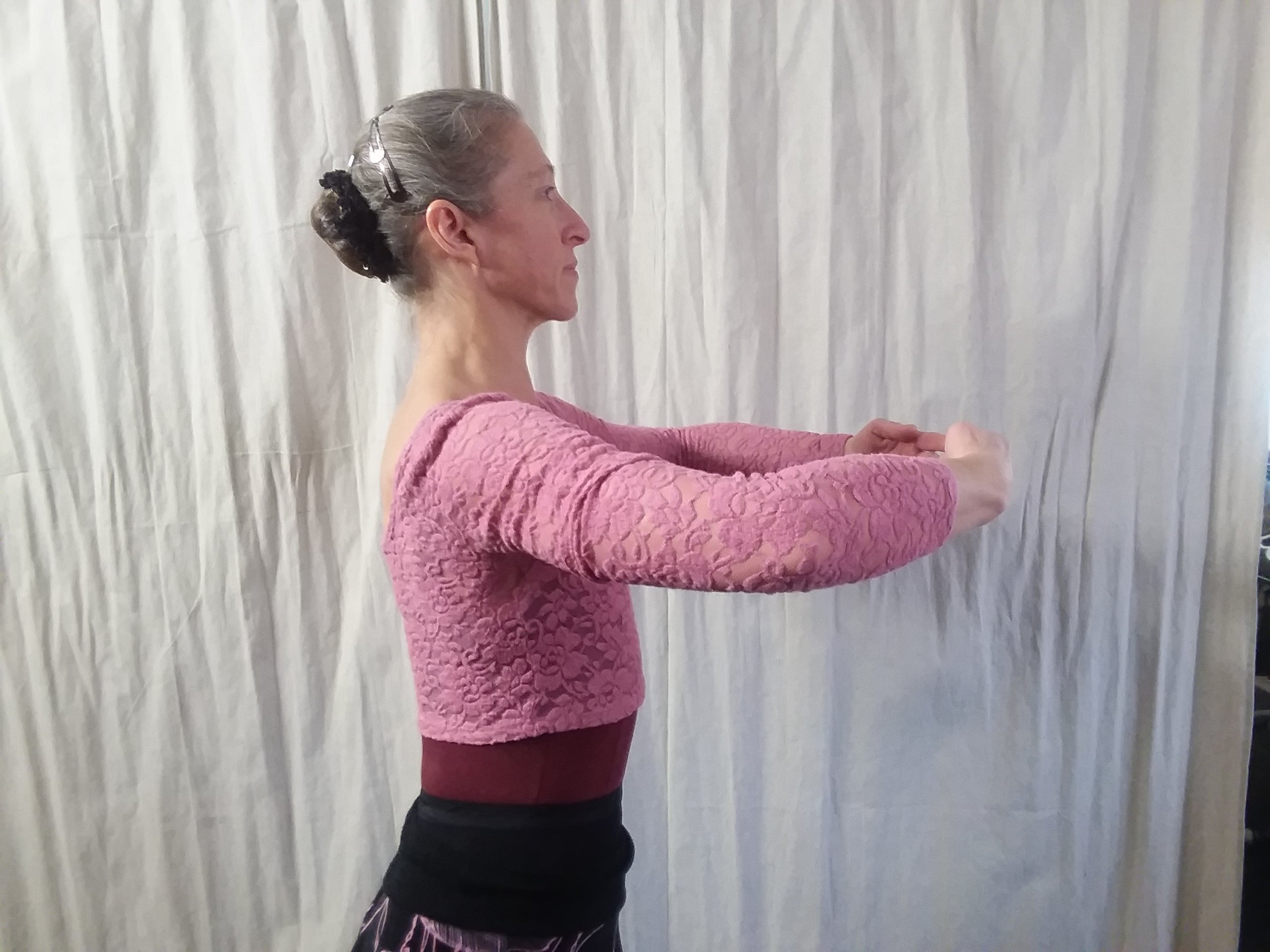
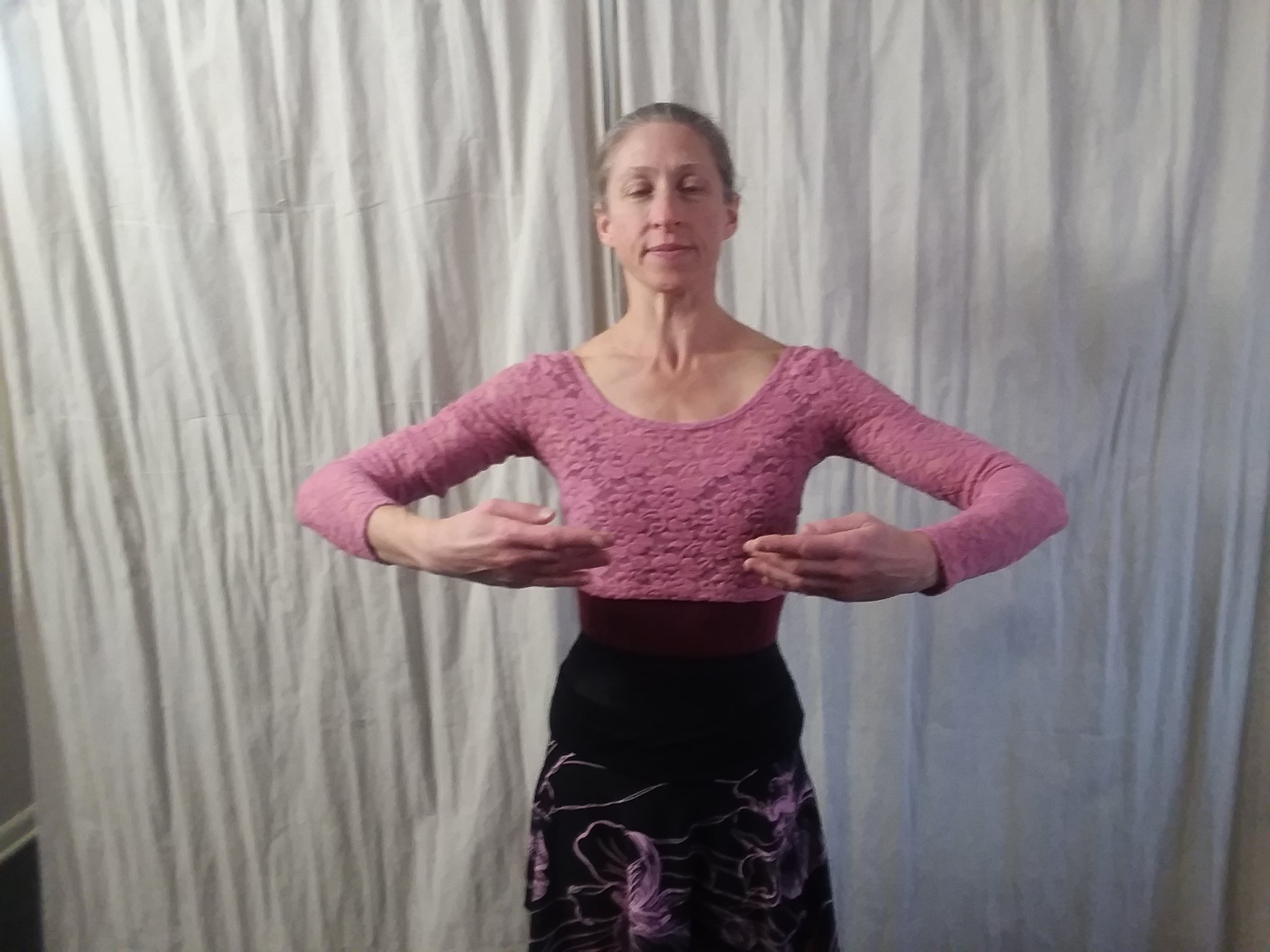
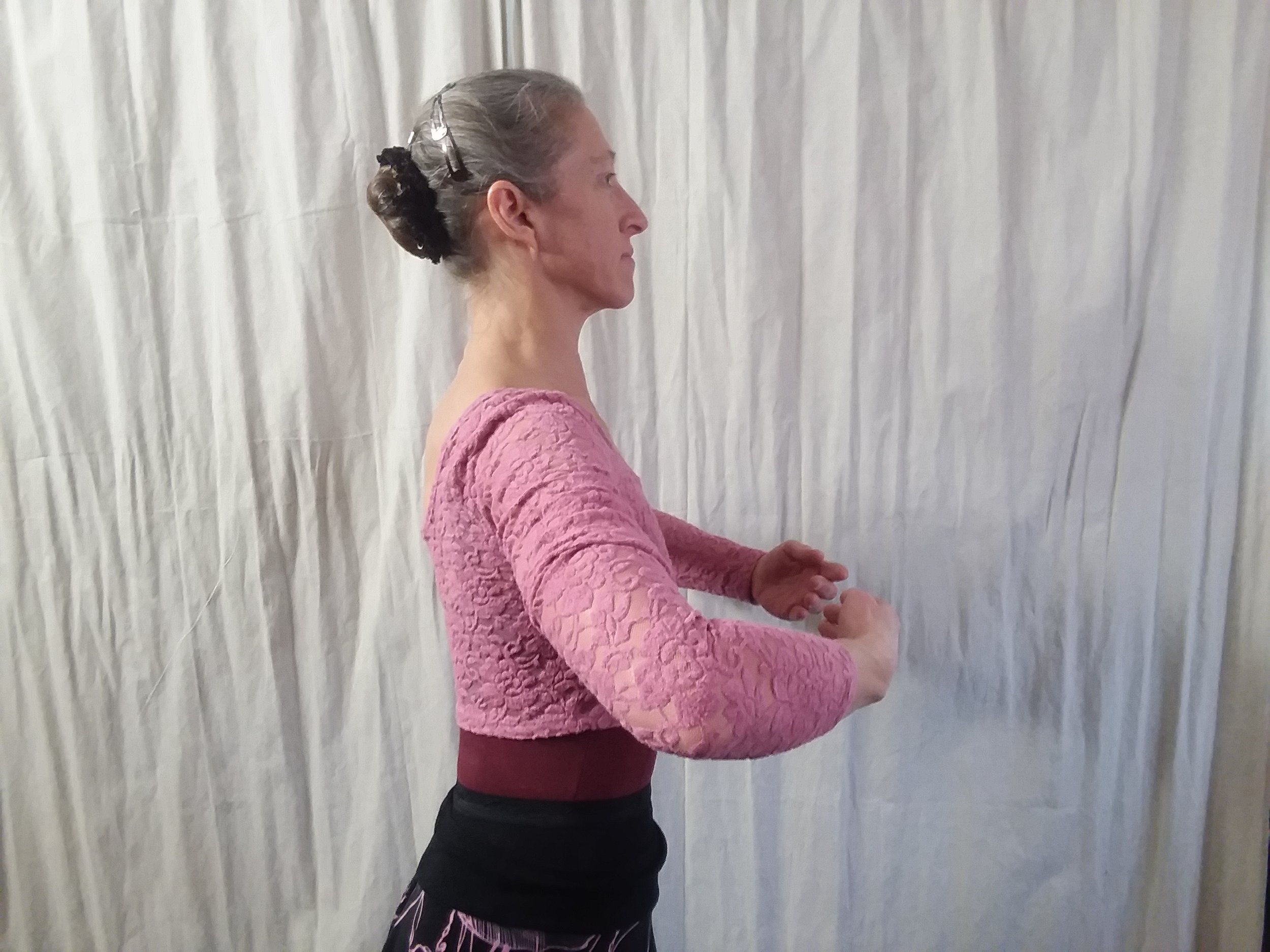
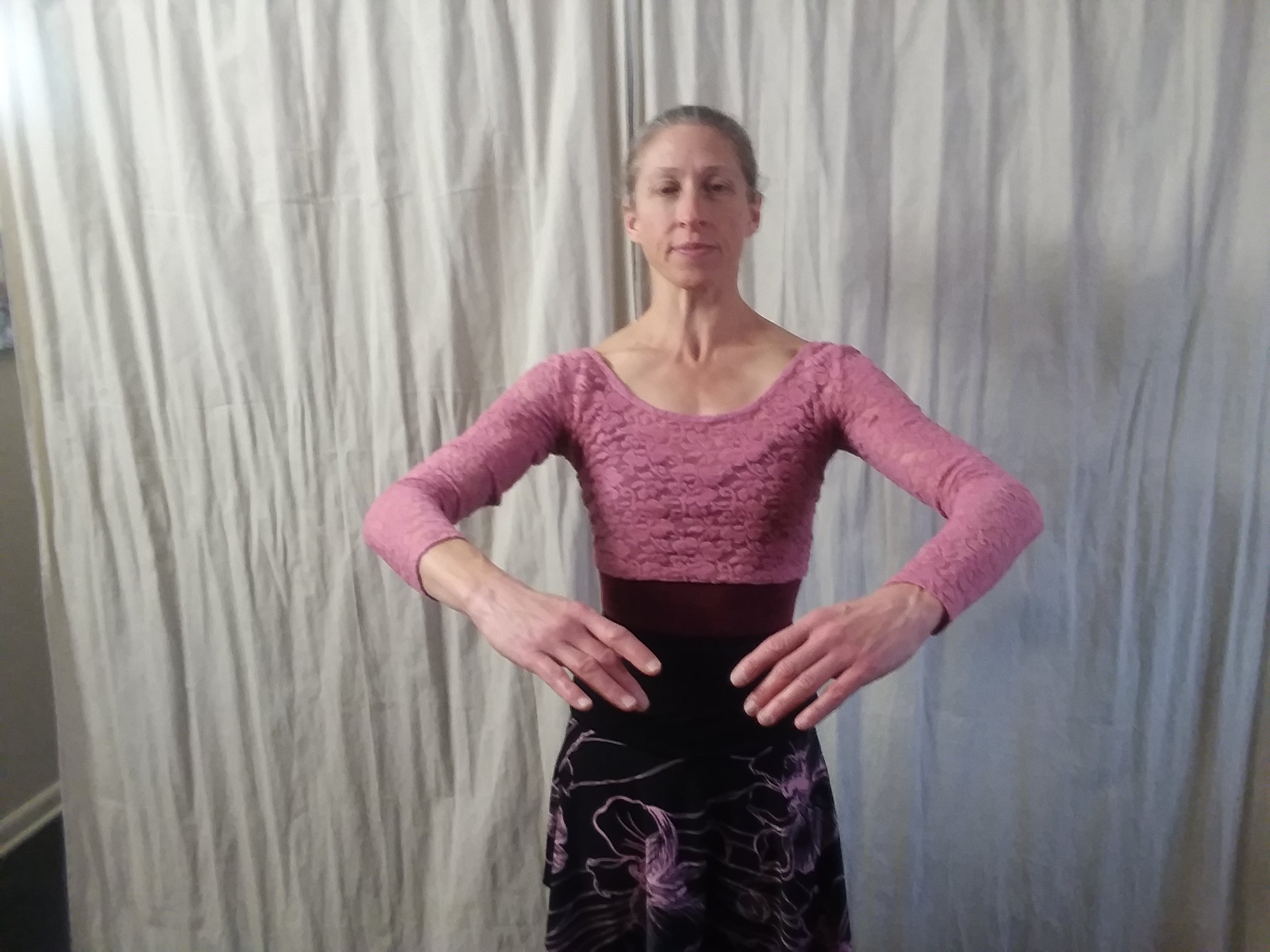
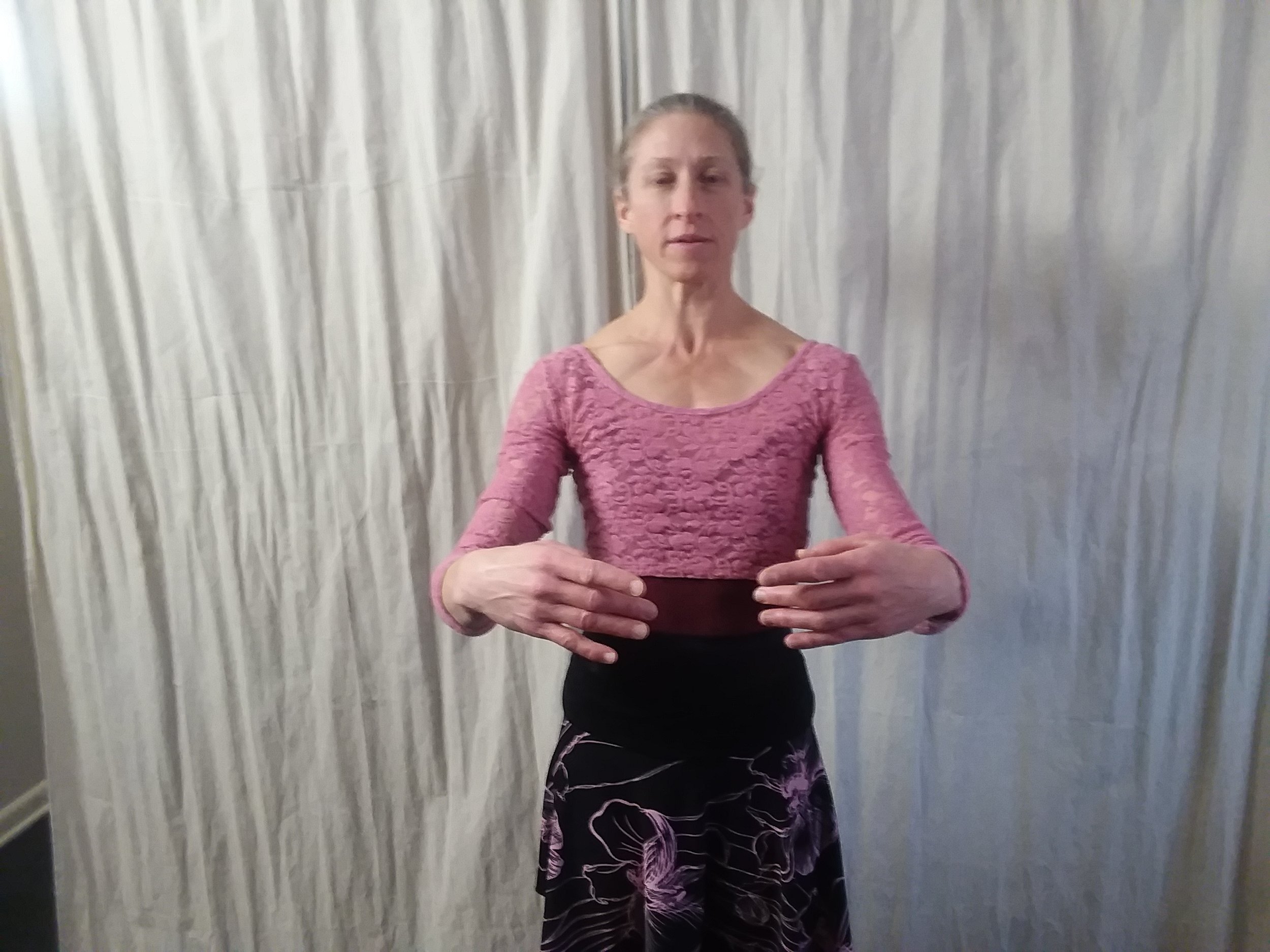
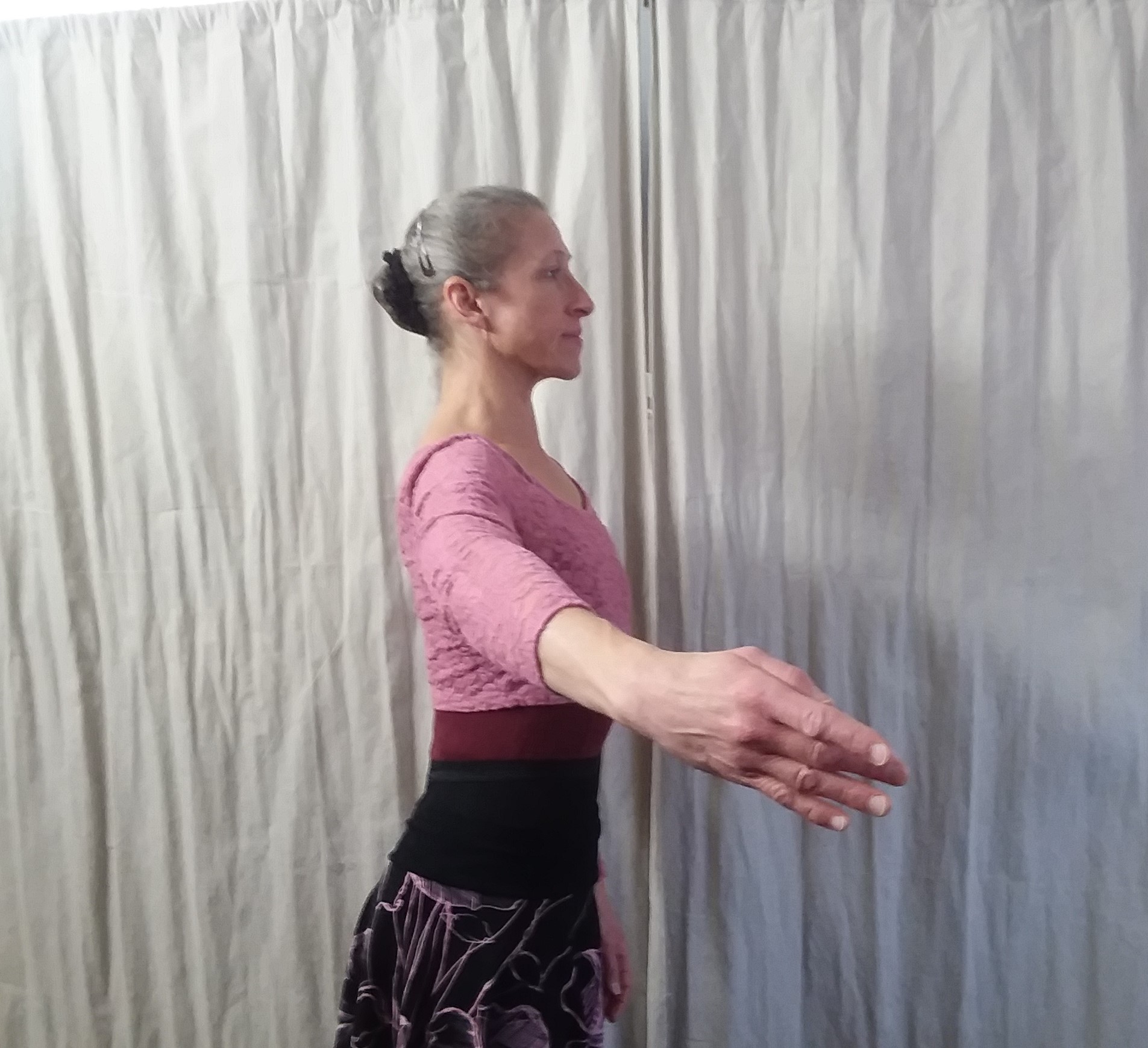
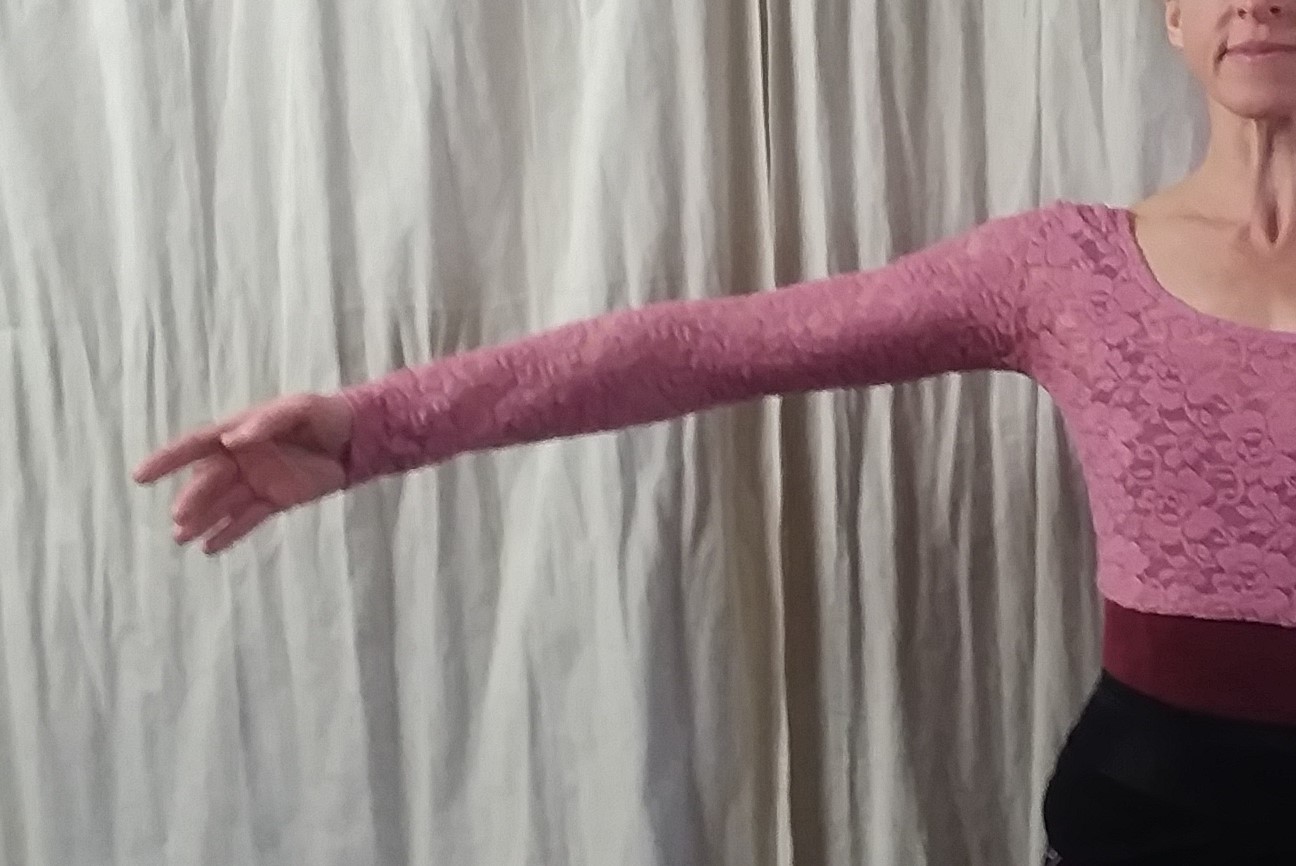
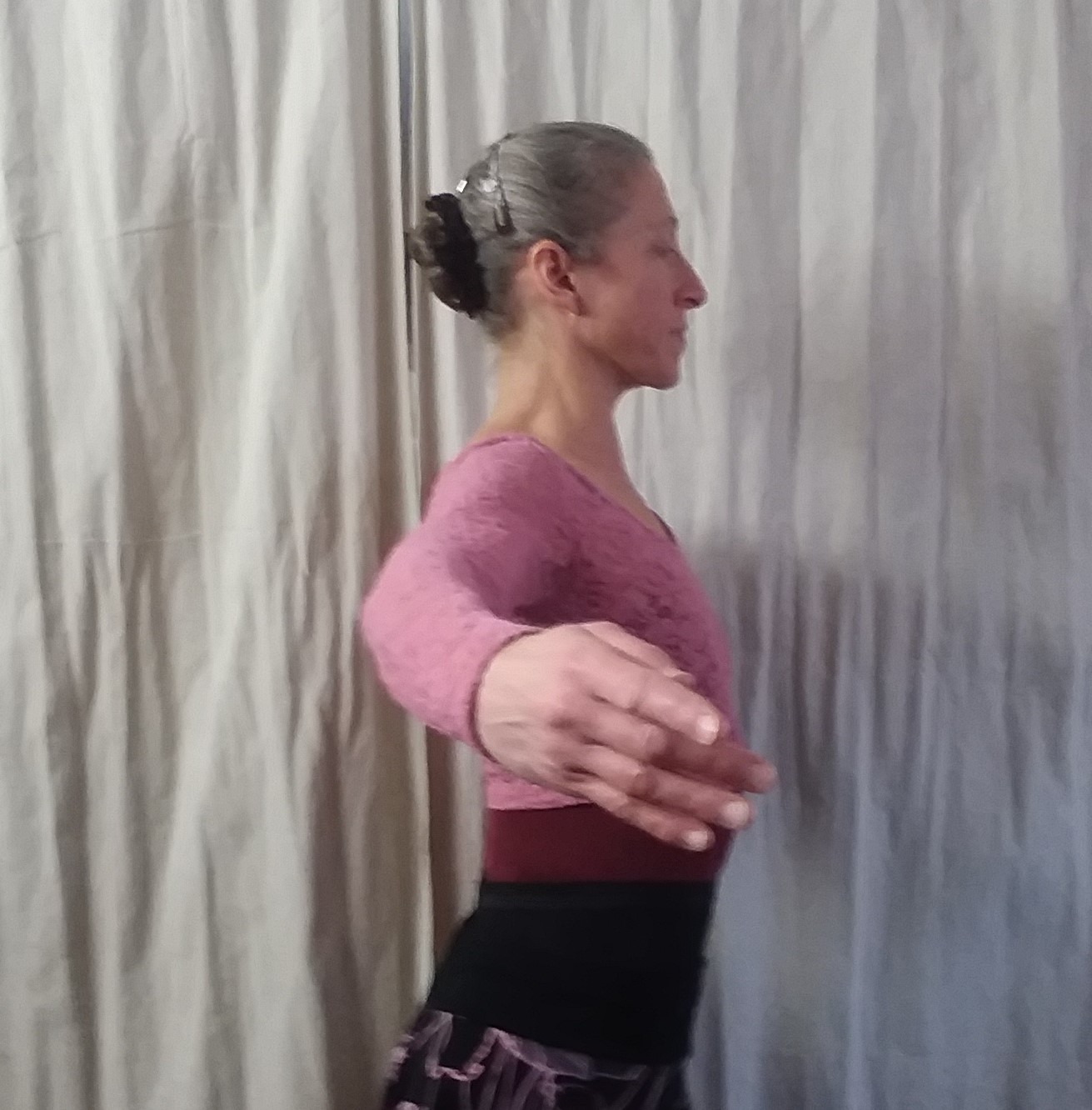
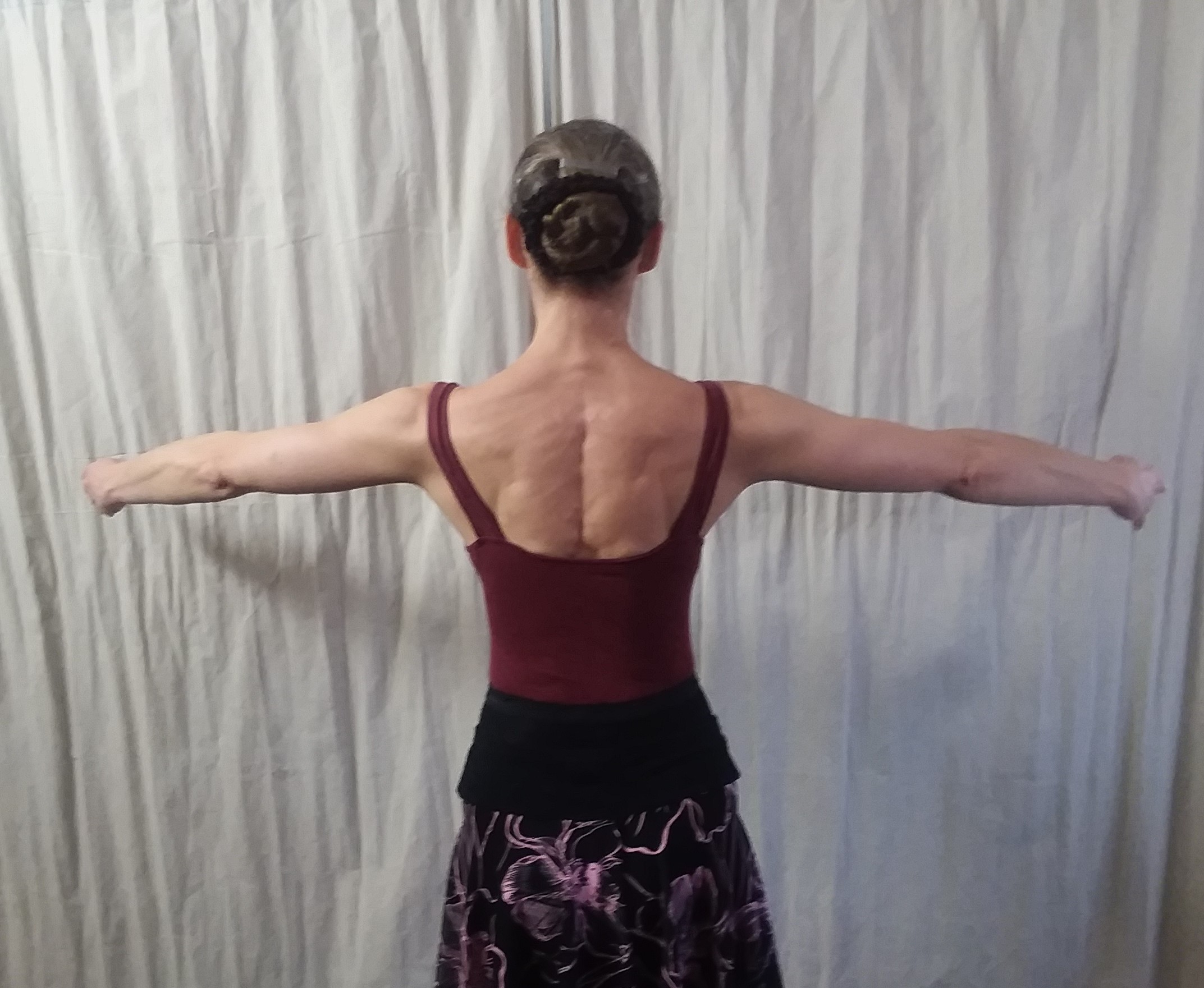
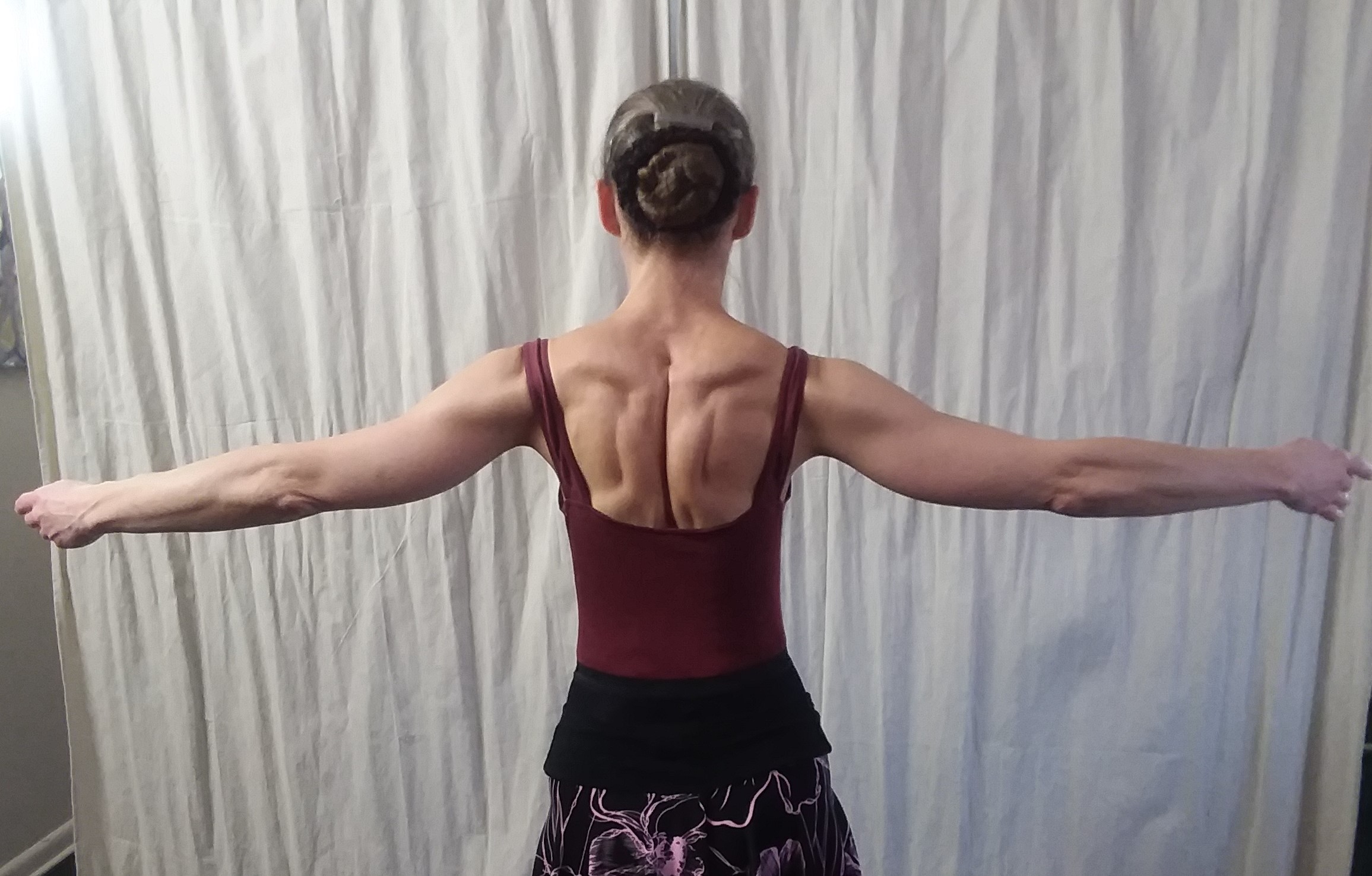
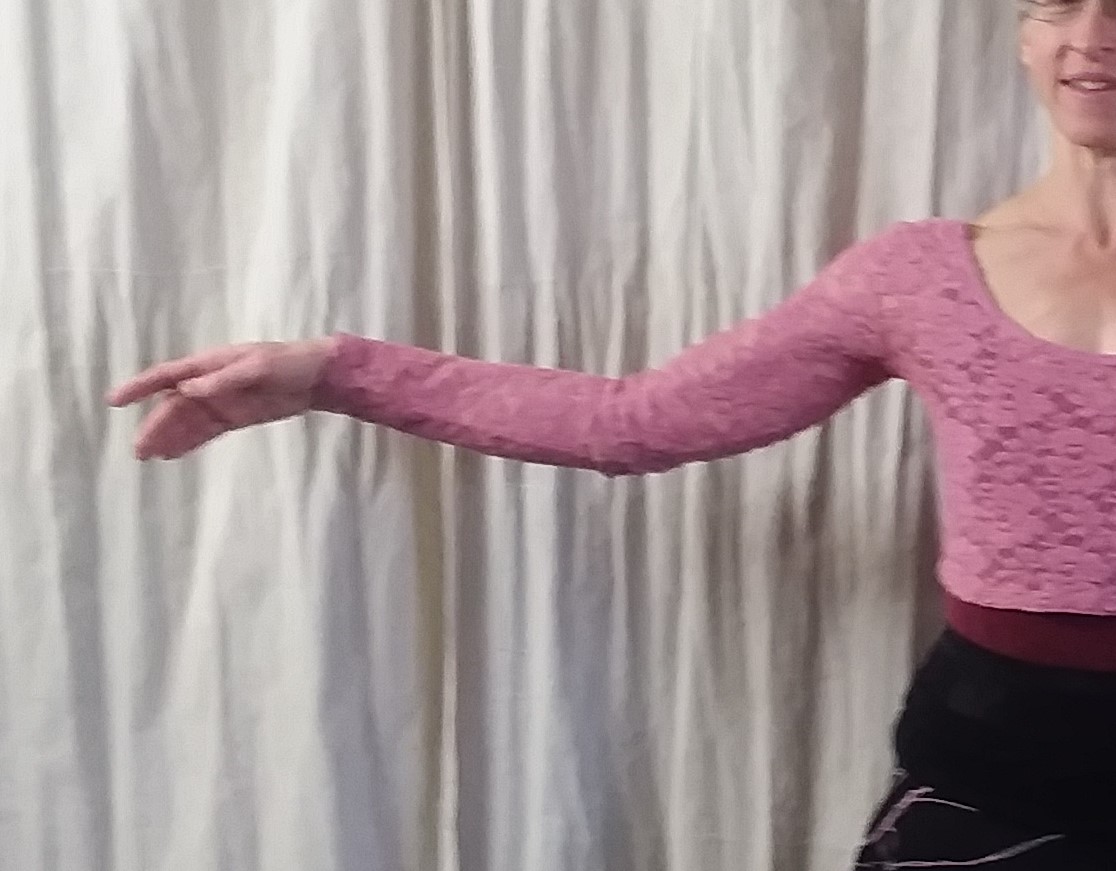
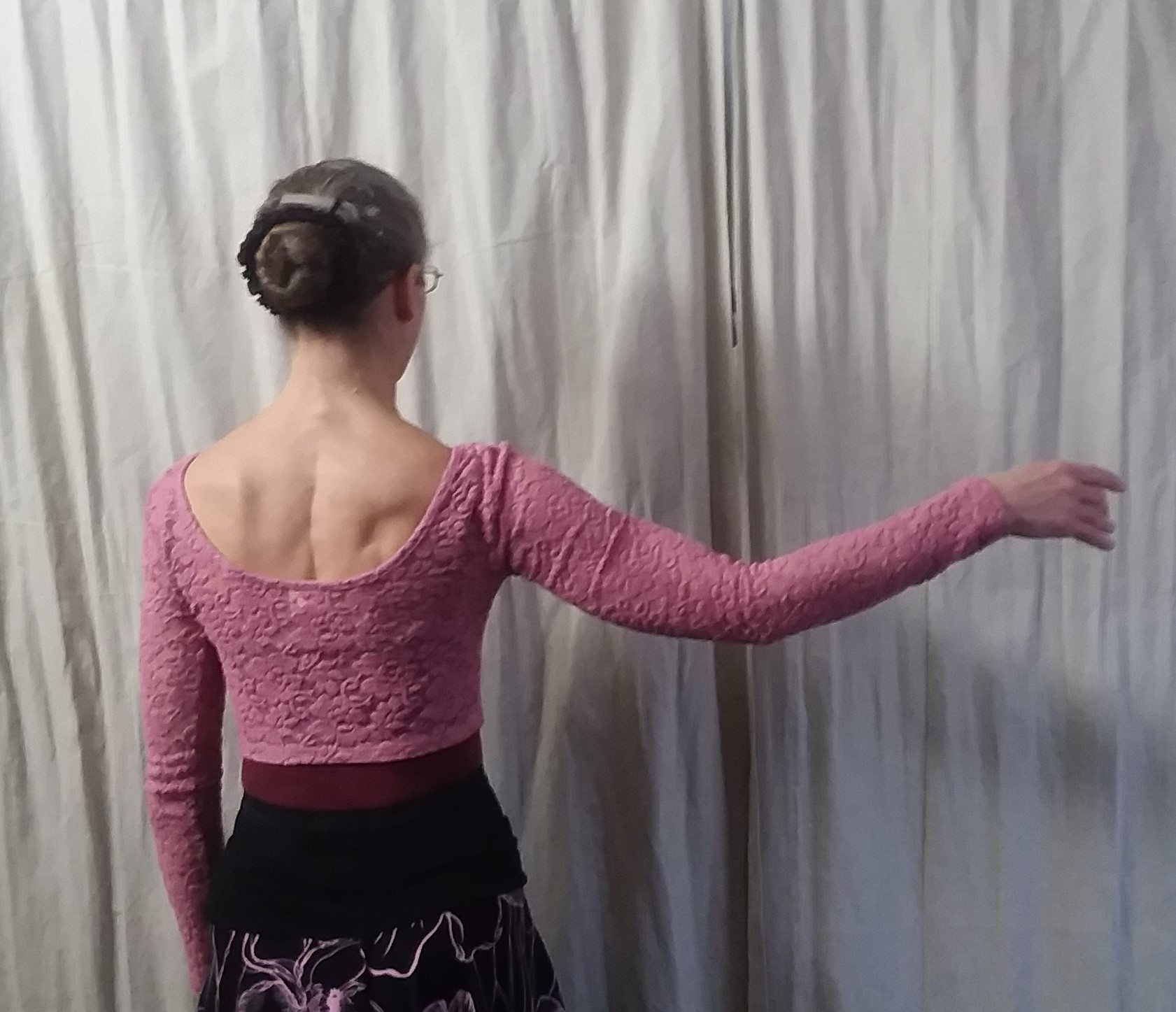
Second Position
In second position, the arms are held wide from the center of the back in long arcs sloping gently down from the shoulders to the fingertips. Both clavicles and scapula should be spread wide, not pinched. The upper arms rotate backward, keeping the shoulders down, while the lower arms rotate forward, lifting the elbows, and the hands rotate backward allowing the palms to face more-or-less forward. The arms should be just slightly forward of the back such that they are wide, but not thrusting the chest forward, pinching the scapula, nor dropping weakly from the shoulder blades.
Third Position (also commonly known as “high 5th” in Cecchetti training)
The arms are again in an oval shape in third position, as they are in preparatory – this time overhead. It is essentially preparatory position brought upward. The shoulders must be actively drawn down in this position as they will naturally want to creep up which shortens the neck and crowds the head. Elbows must be rotated open in this position so they do not break the arc as seen from the side view. The arms are just slightly forward – if your head is straight and you turn just your eyes upward, you should be able to see the pinky finger of each hand. Palms of the hands are turned towards the forehead. Wrists are long and matching the arc created by the curve of the elbows. The dancer must be careful that the wrists do not “re-curve” in a direction opposite of the elbow curve. All the curves of the joints must be continuous, creating a flowing arc uninterrupted by angular elbows or wrists or fingers.
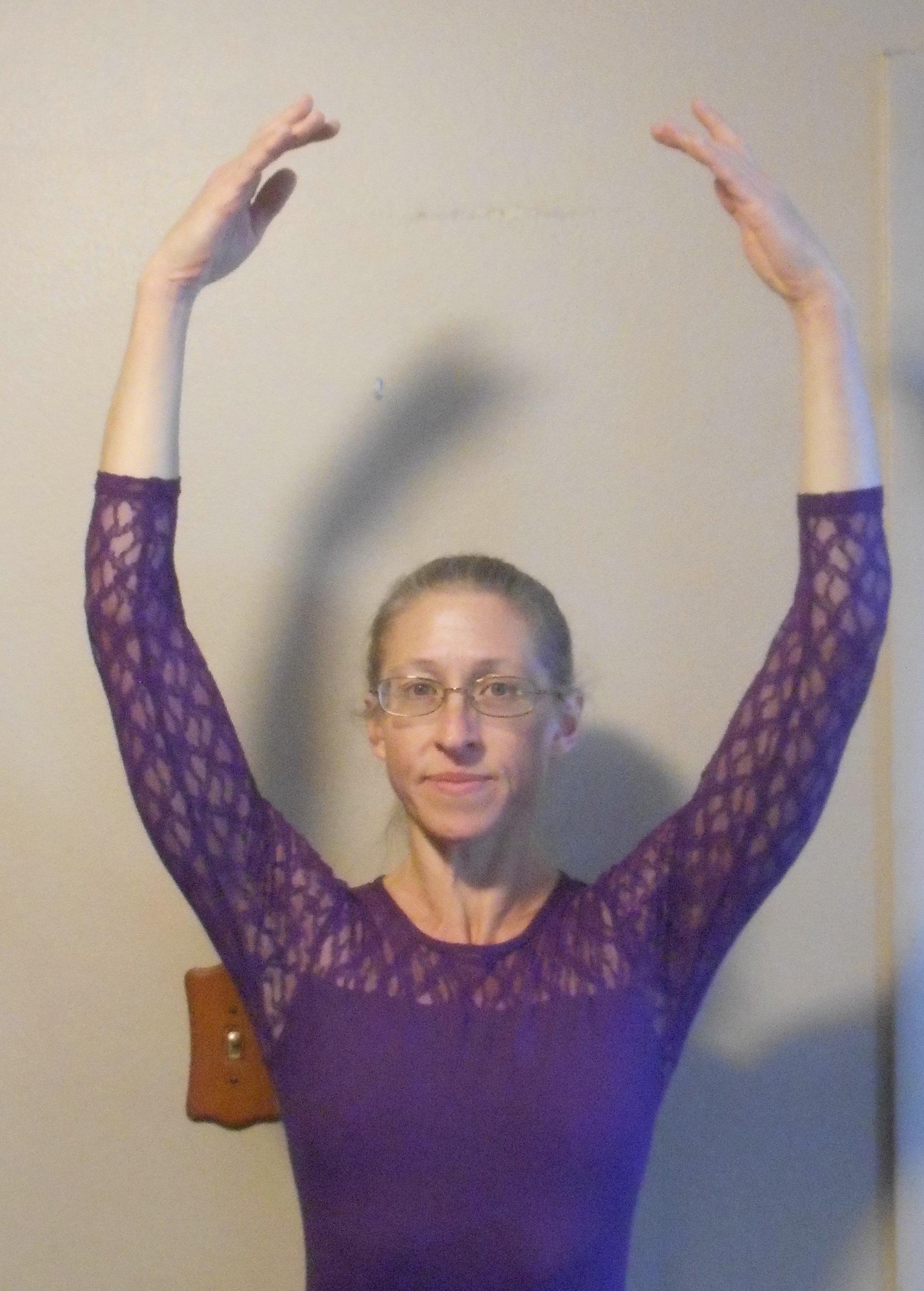
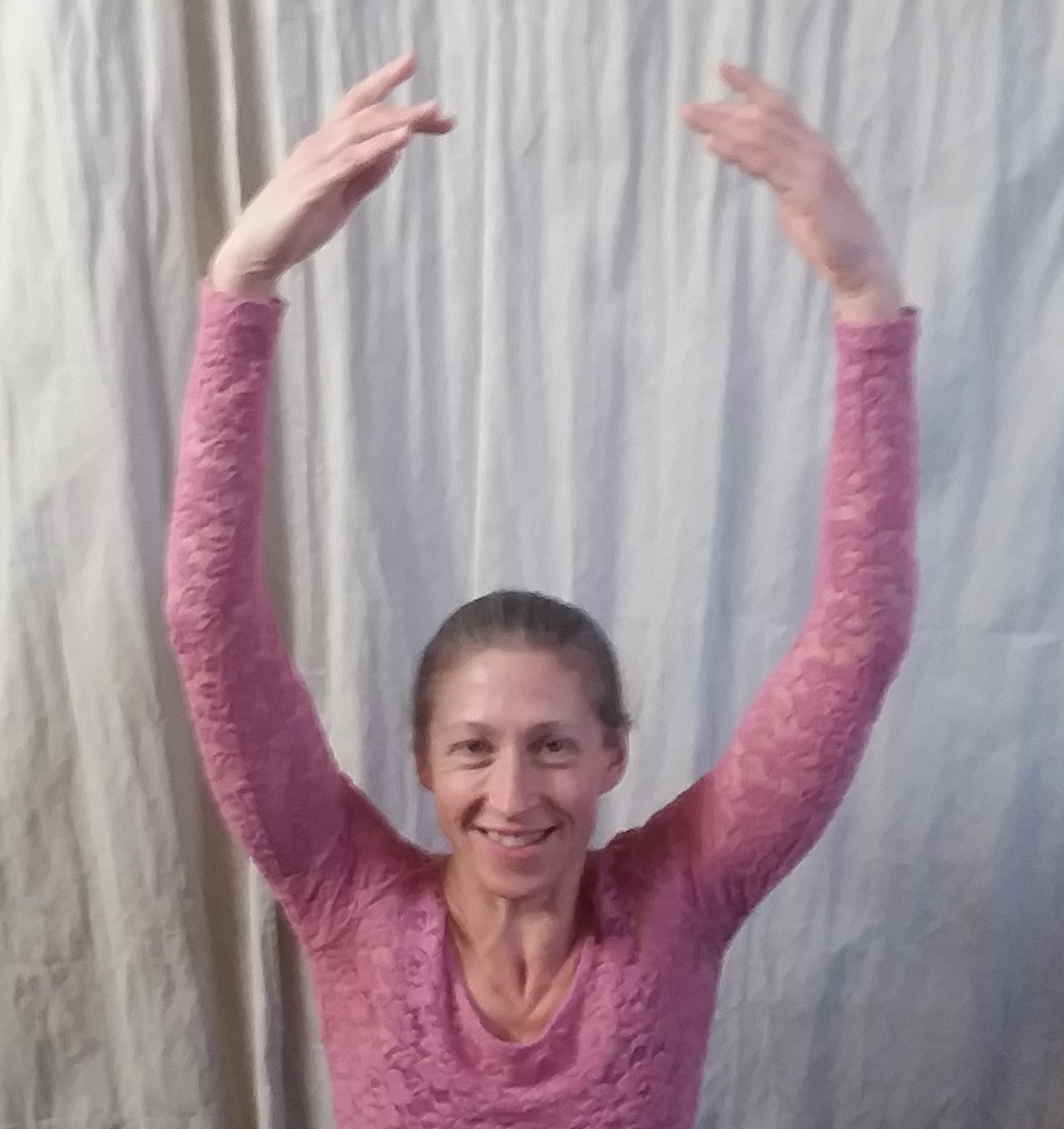
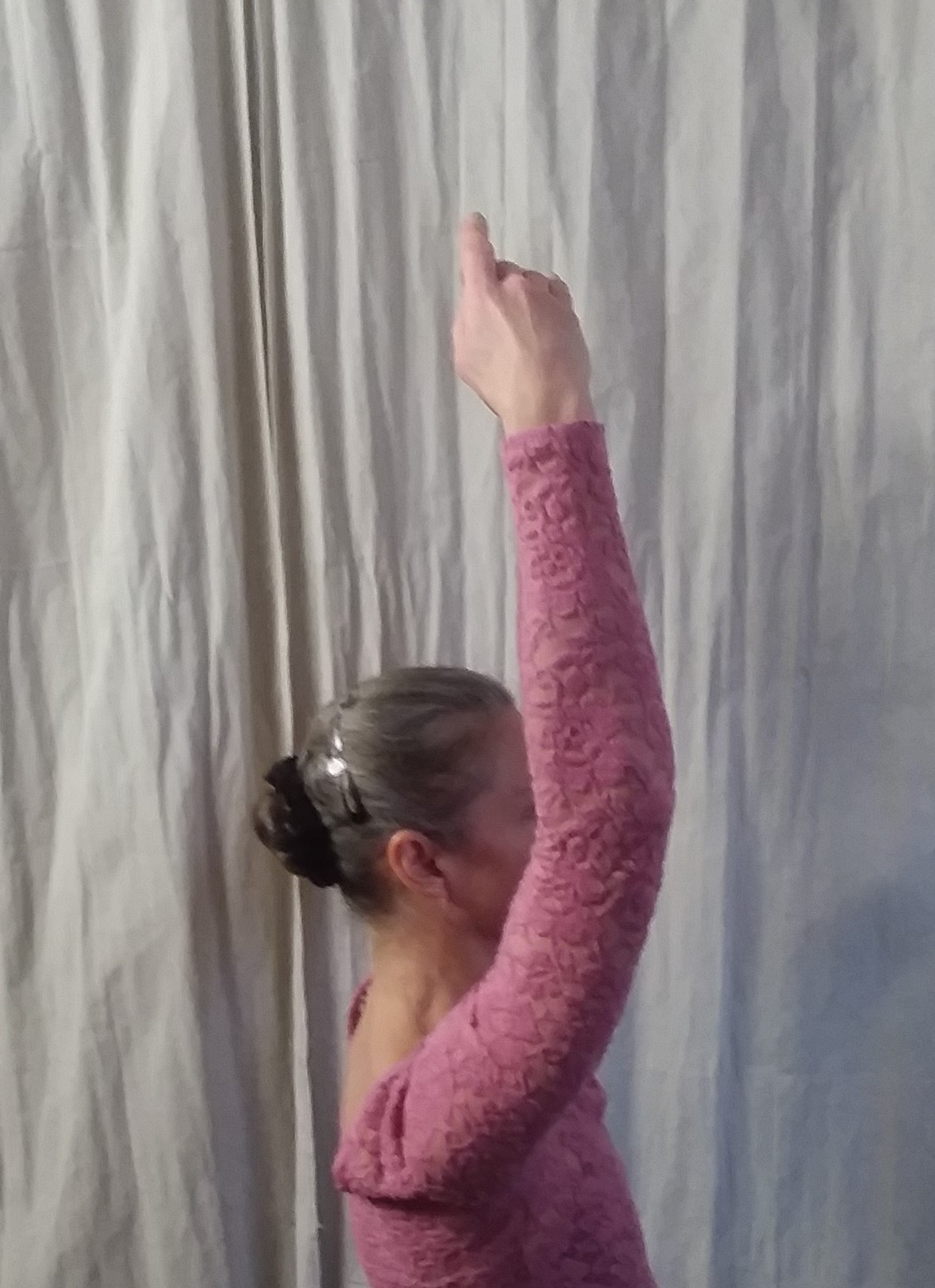
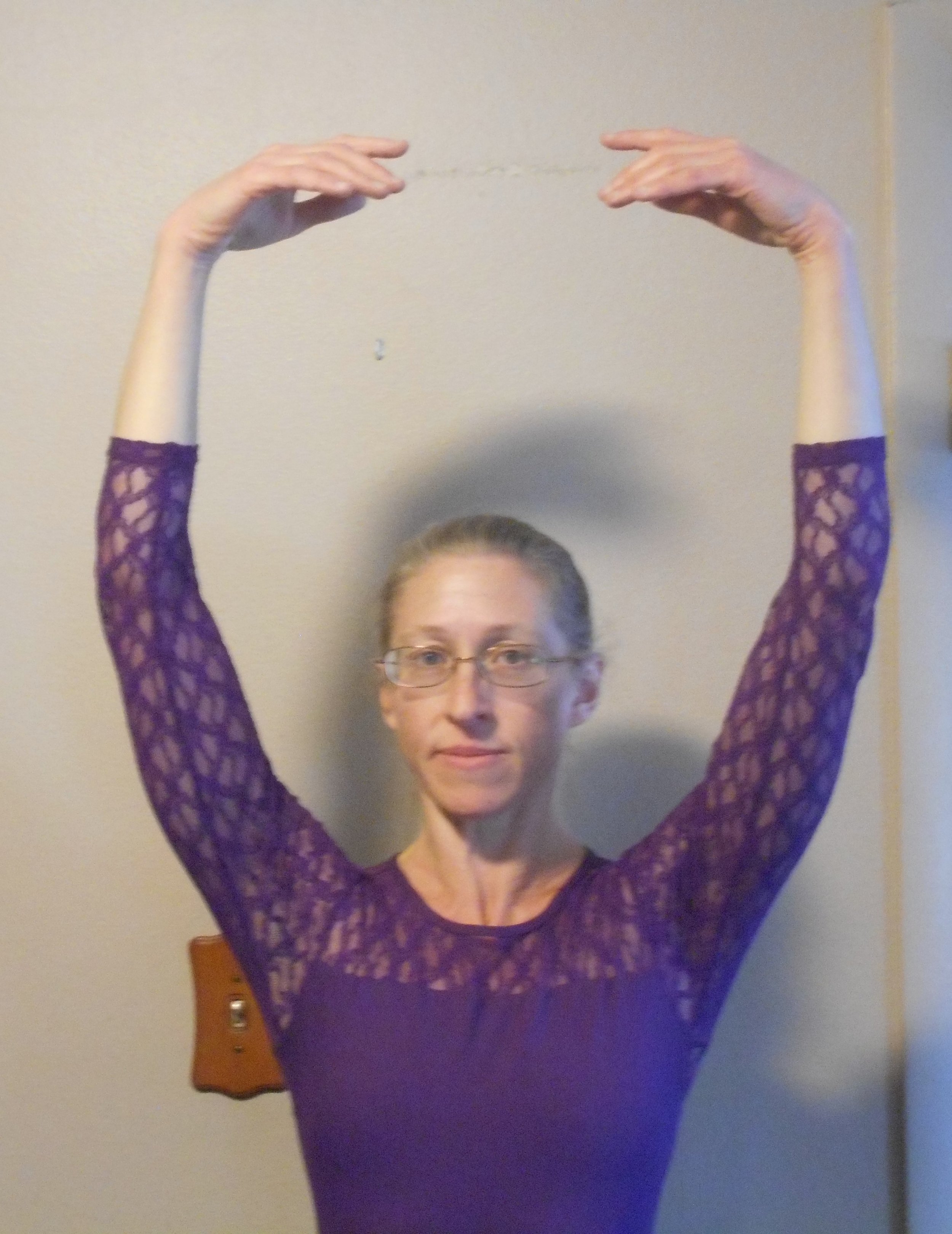
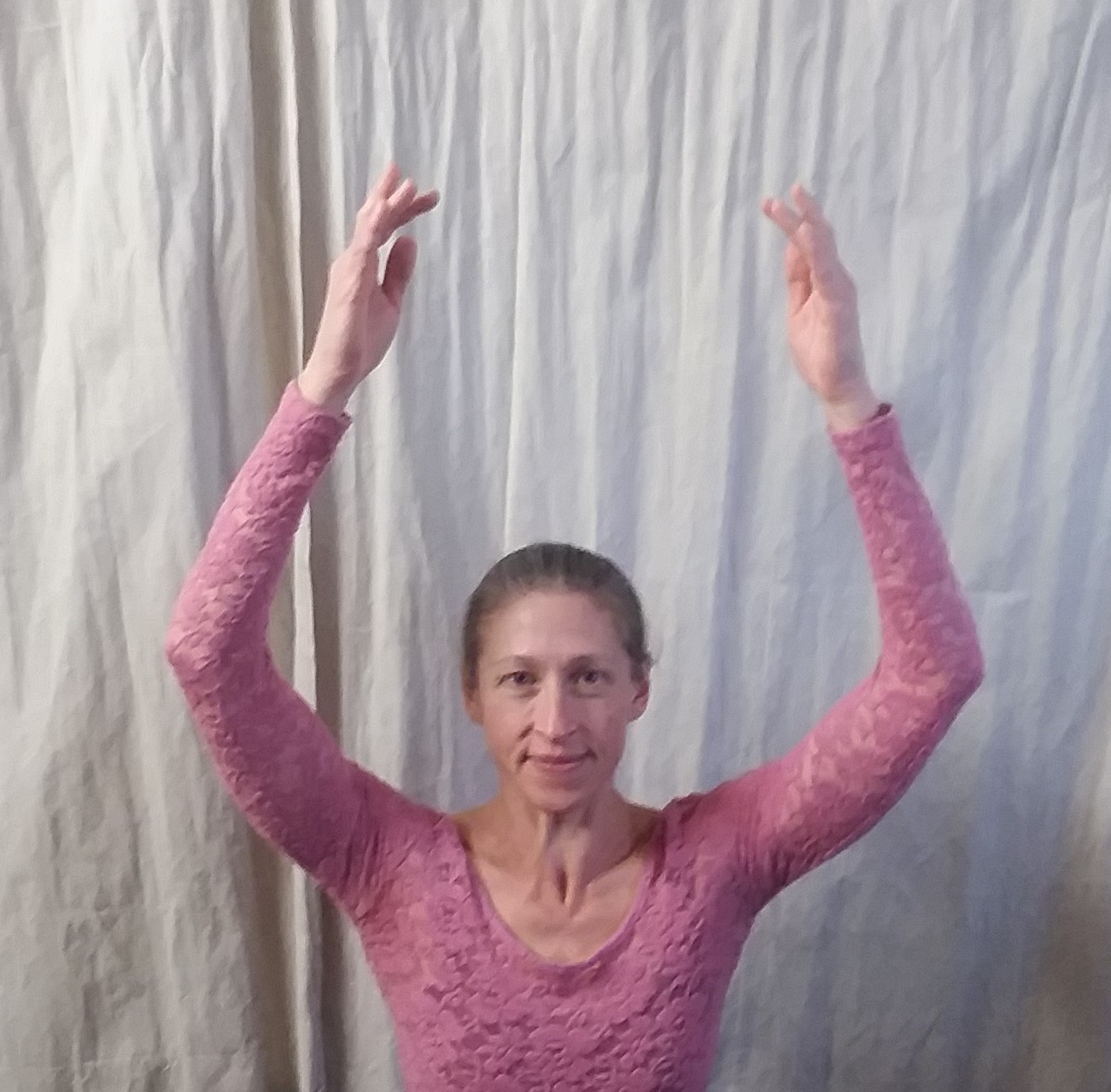
Allongé and Arabesque Positions
Allongé
Each of the basic arm positions can be stretched to an allongé position in which the palms of the hands generally face downward and the fingers elongate, as do the elbows. Although elongating, neither the fingers nor the elbows should be entirely straight as this would appear stiff and inexpressive. In preparatory allongé, the lower arms open and turn outward while the elbows turn but do not lift. The elbows and palms in 1st position allongé turn to face downward and the arms and fingers elongate out in front of the shoulders. The arms should not have a collapsed look, but should appear to send the energy out through the fingertips. Meanwhile, the shoulders must remain down and open. In 2nd position allongé, the elbows and palms of the hands again turn downward while fingers stretch out energetically but not stiffly. This position is part of the transitions in moving the arms from 2nd position to preparatory as well as from 2nd position to Vaganova 3rd position (5th position en haut in Cecchetti terms). 3rd position allongé is much like that in preparatory except that it takes place overhead instead of down by the thighs. As in preparatory allongé, the elbows turn, but do not otherwise move. The palms turn outward and the lower arm opens forming almost a “V” shape, although again it is important that while stretching the elbows and fingers, there should not be a stiff look to the arms and they should not be completely straight.

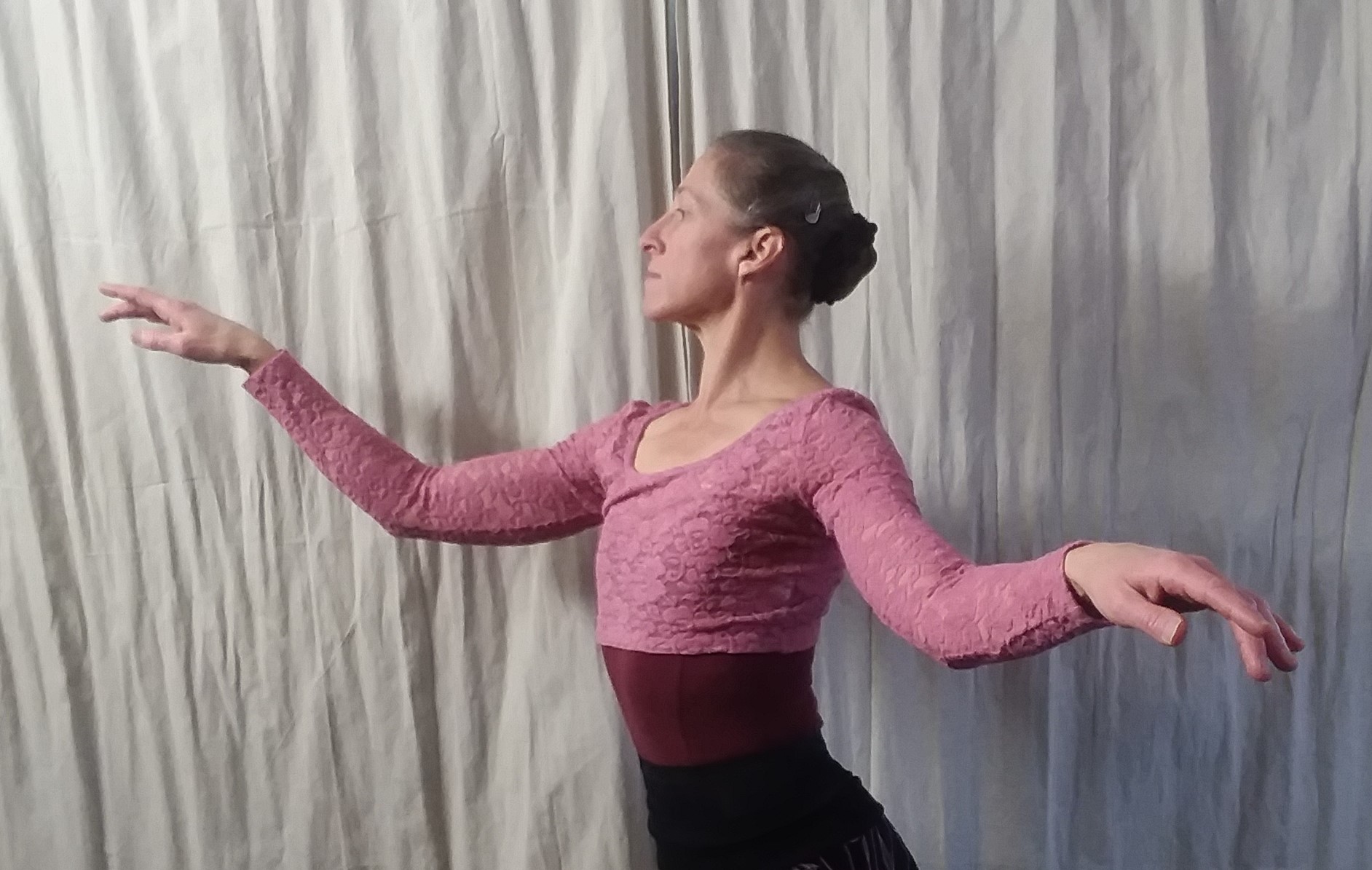
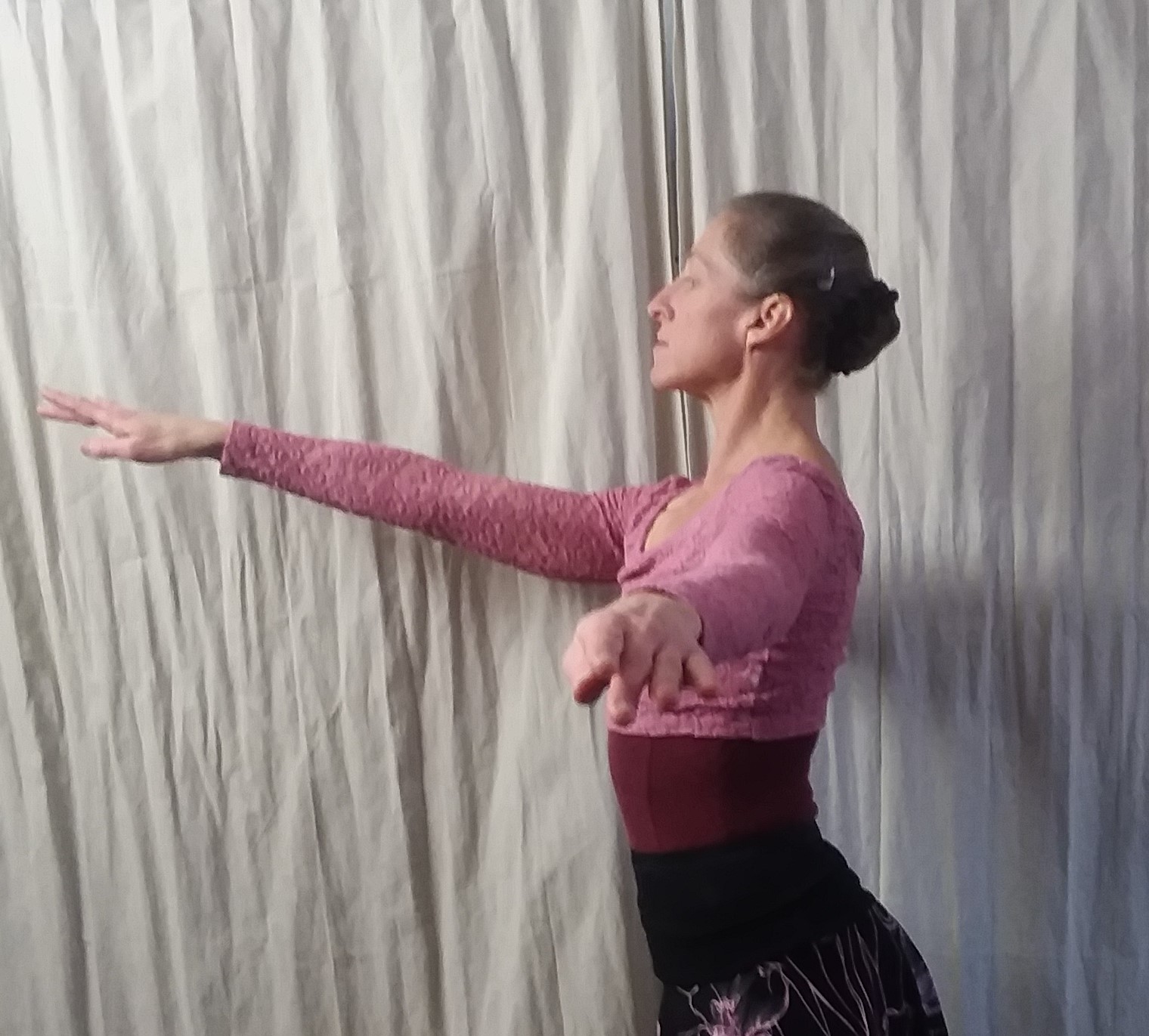
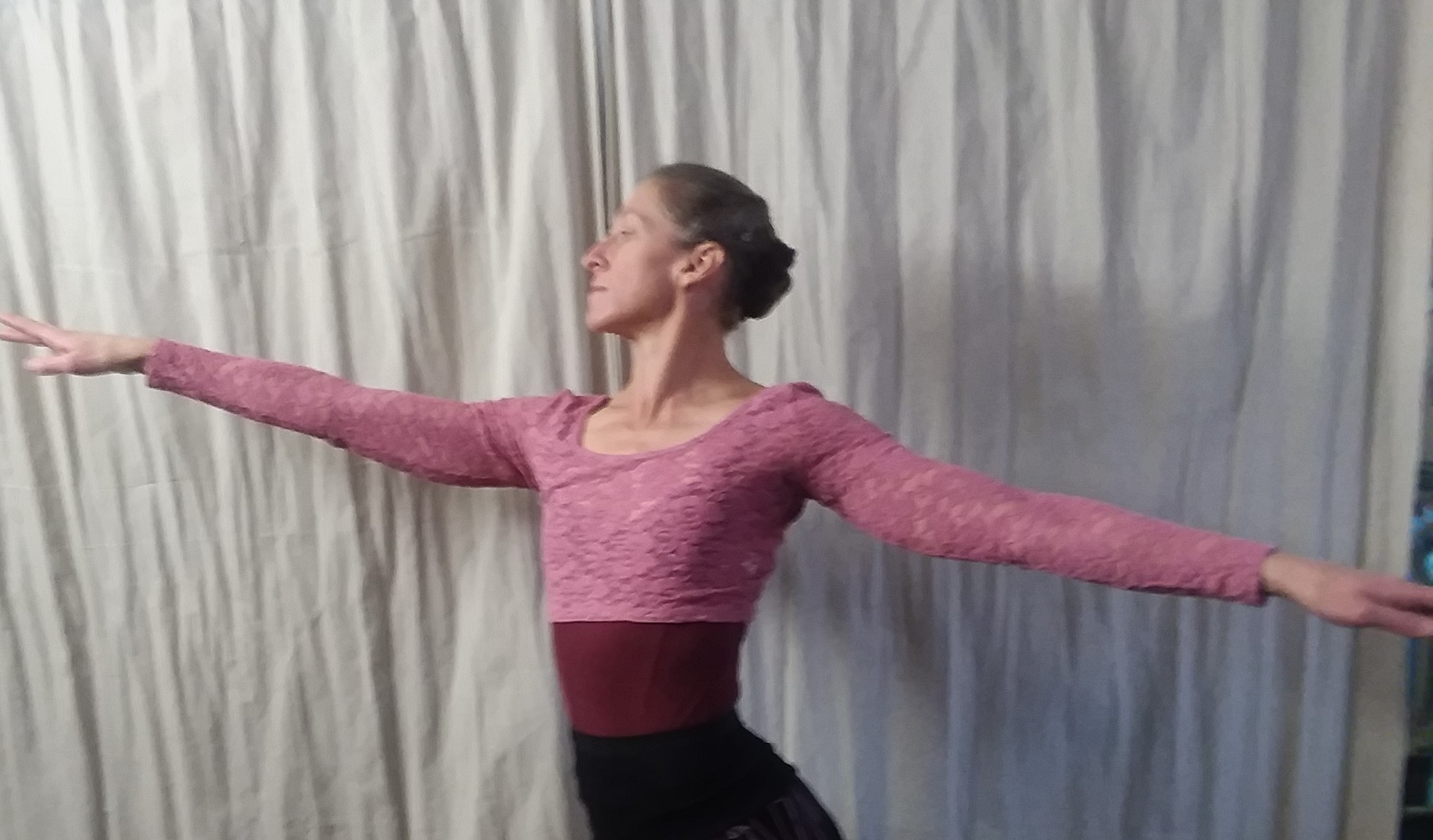
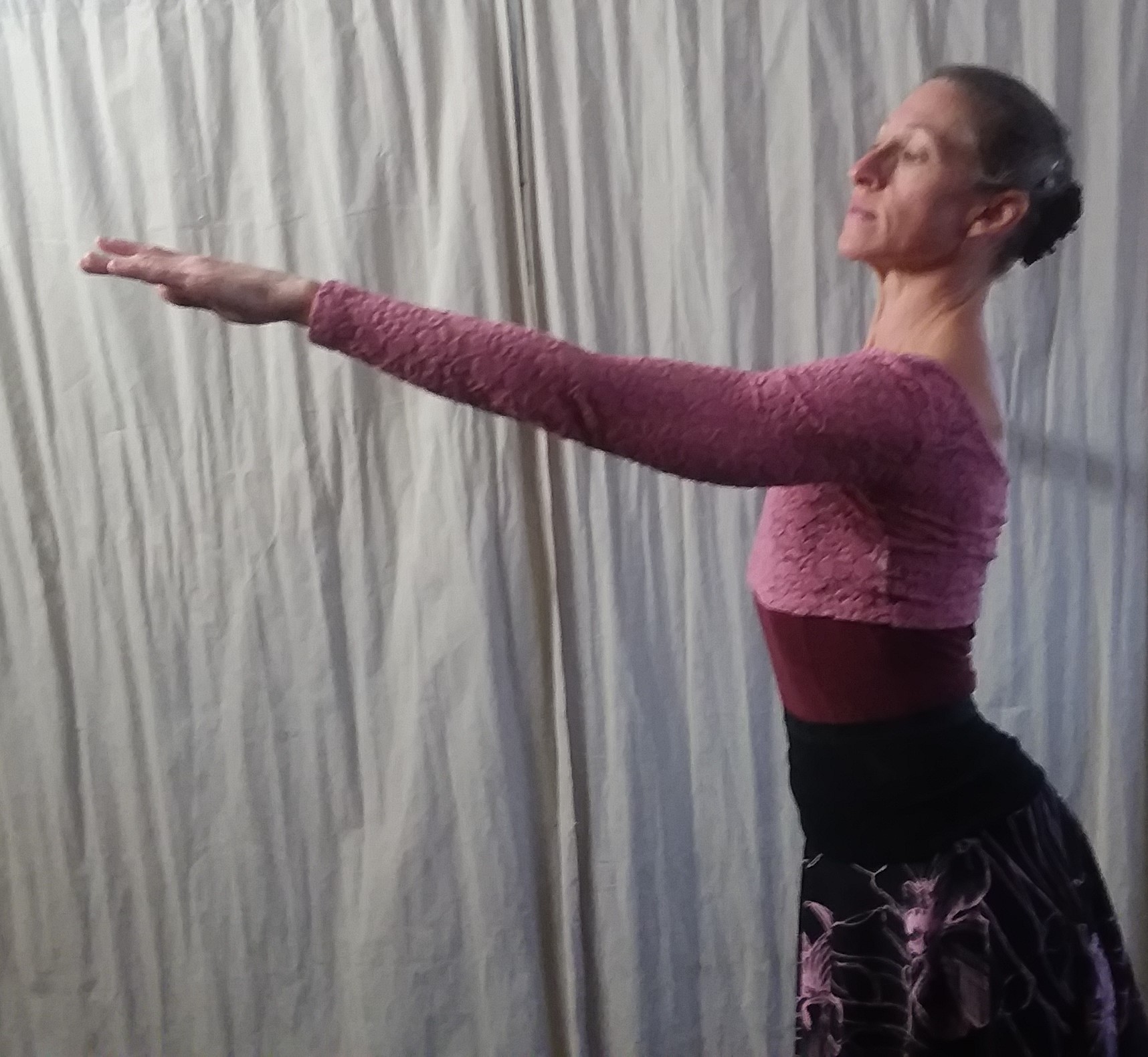
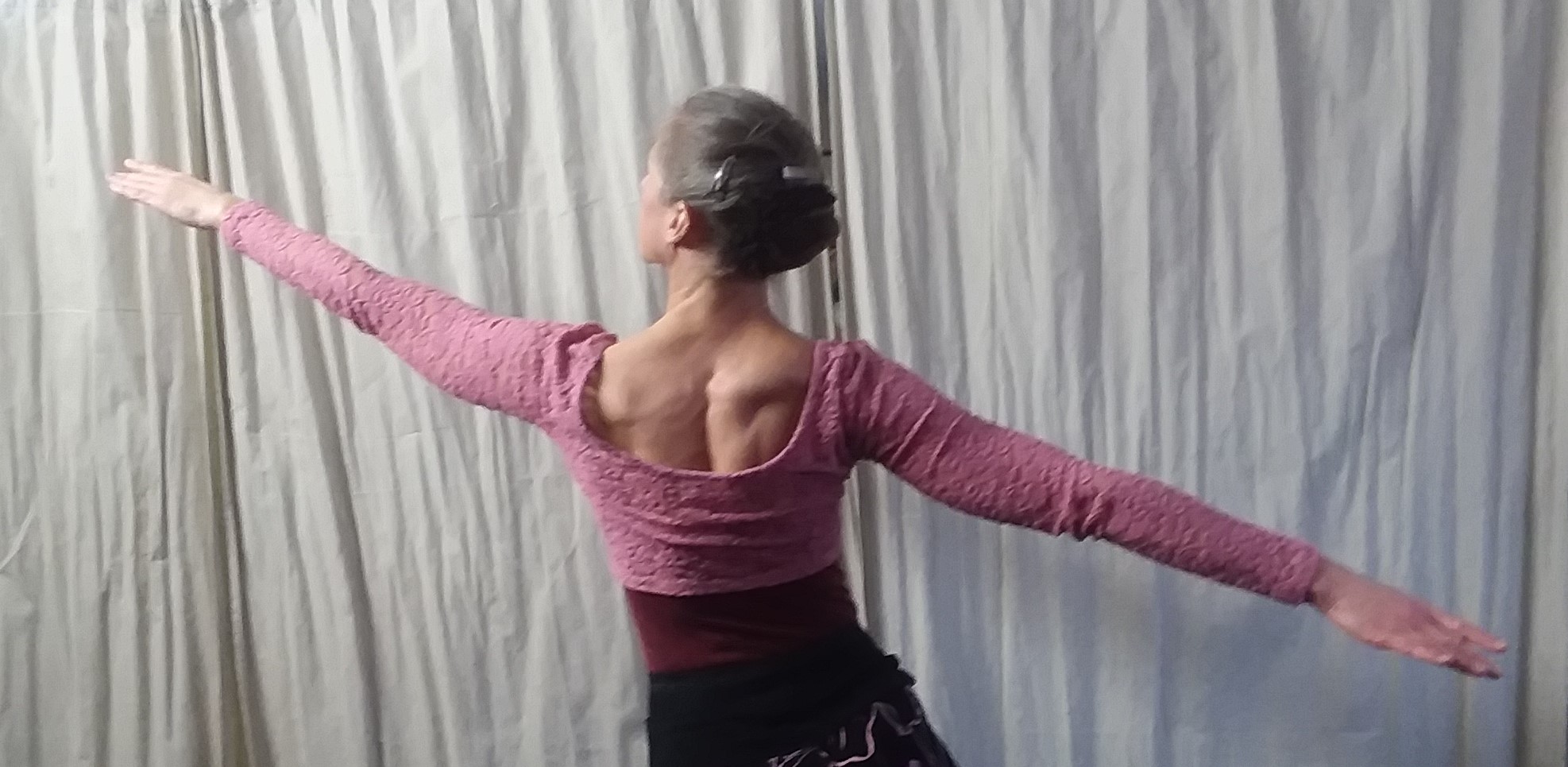

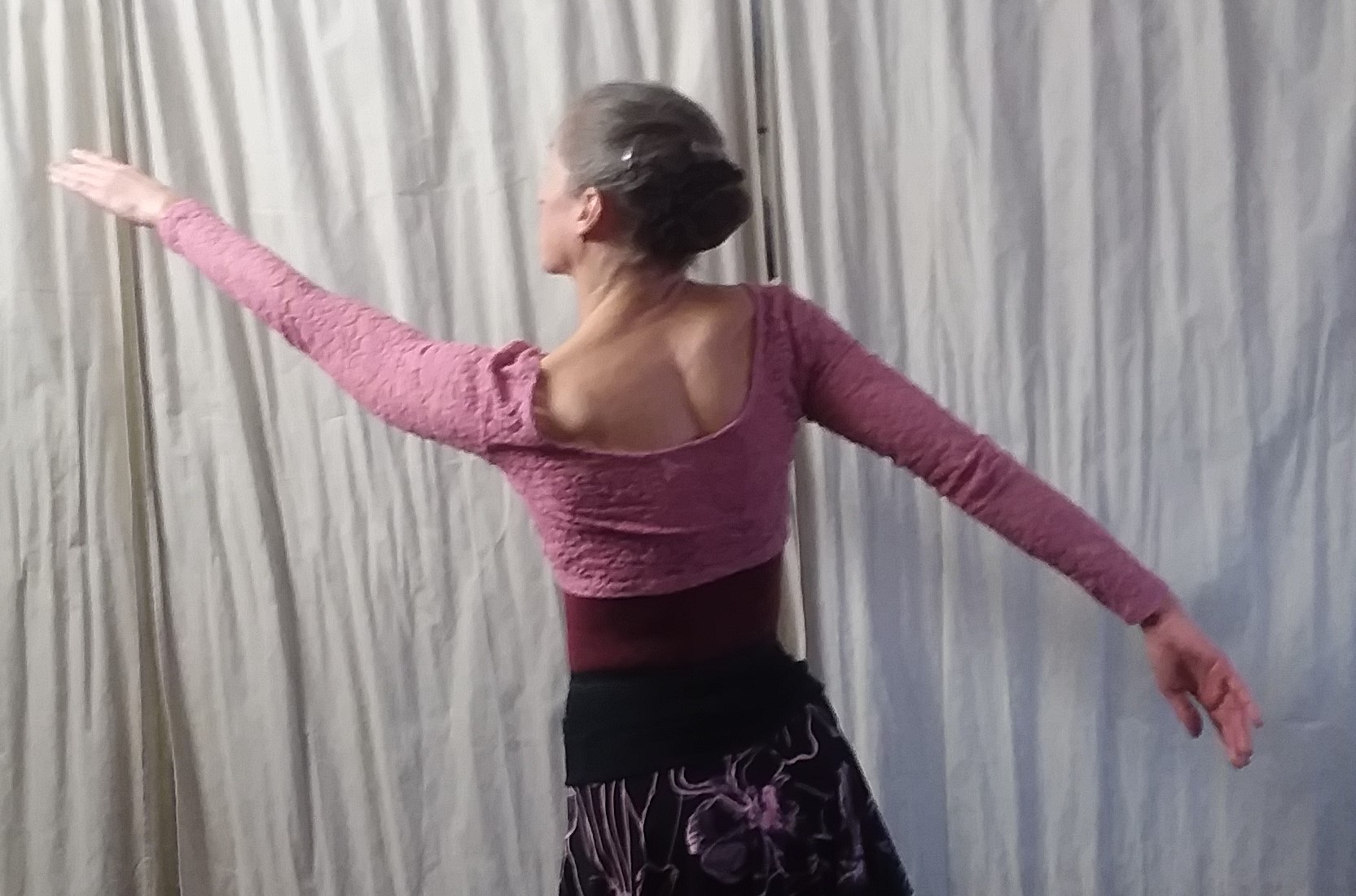
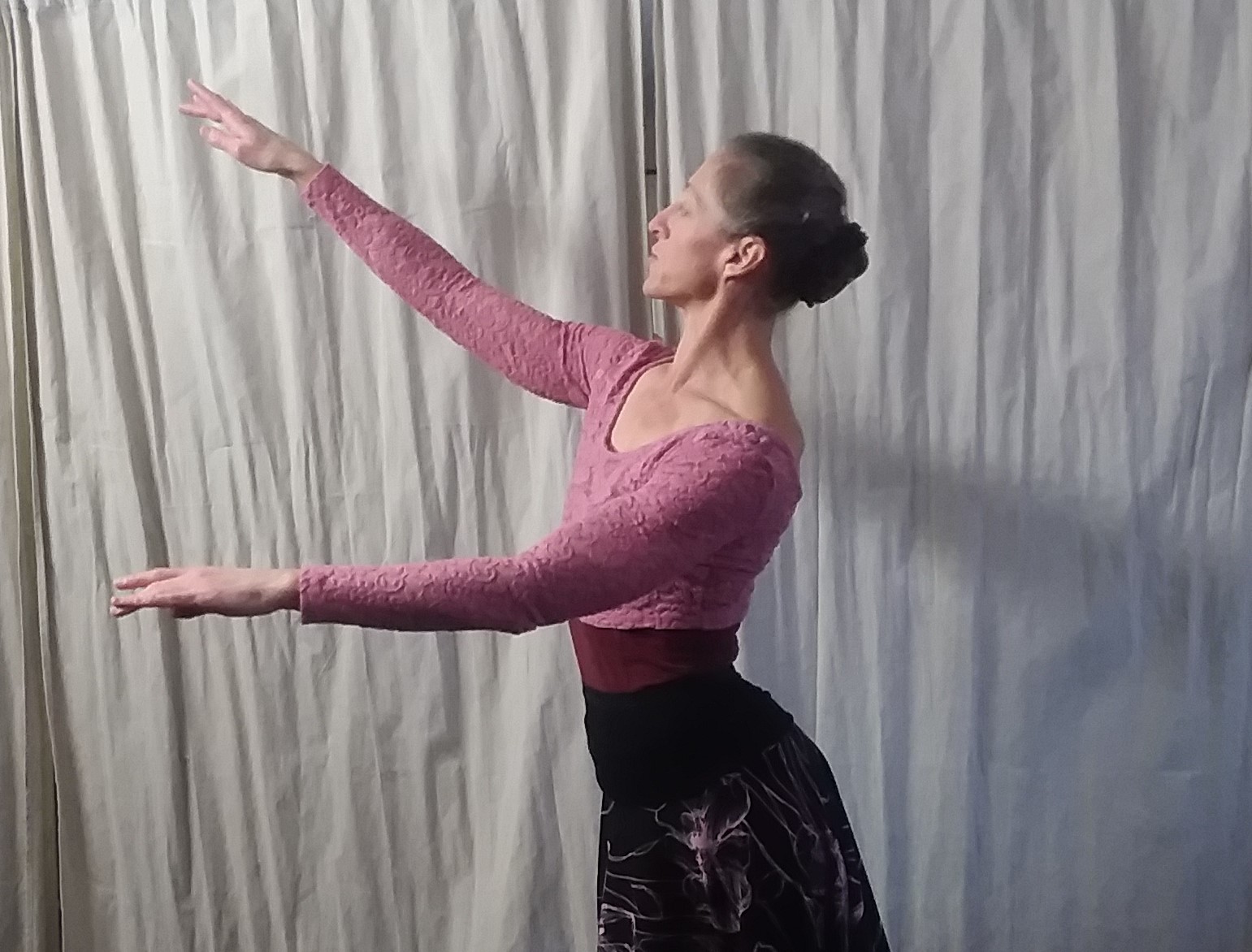
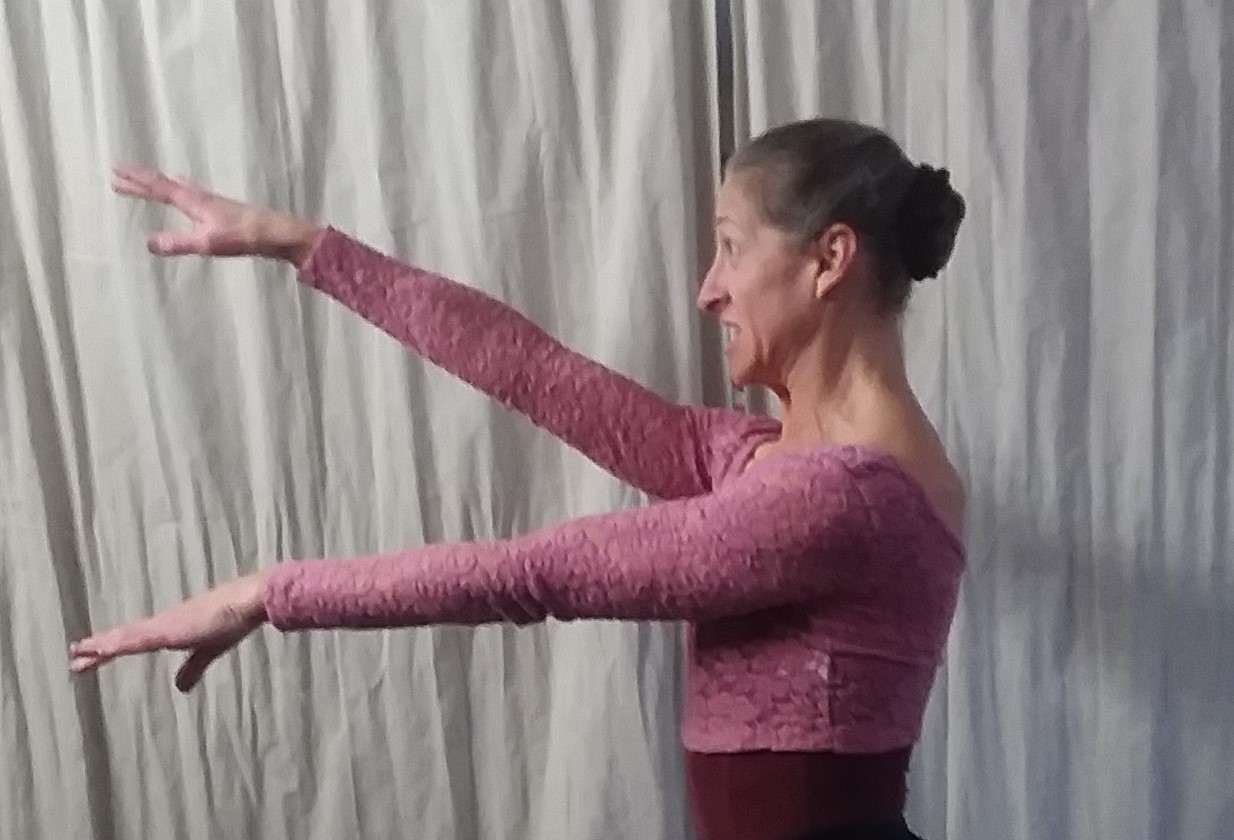
1st and Vaganova 3rd Arabesque Arms
In these positions, the upstage arm is in 1st allongé while the downstage arm is in 2nd allongé. The shoulders open just slightly towards the audience, such that the chest has an open look, but there is not a splaying open of the chest, causing a drop of the upstage side of the body especially in 1st arabesque. The front arm should be about shoulder height in an academic 1st and 3rd arabesque, although commonly in choreography a higher front arm will be desired. The sternum should be actively lifted in these positions causing a slight lift in the chin to look high out over the middle finger of the front hand, increasing the appearance of the continuation of the line of energy pulsing out through the fingers of that front hand.
2nd Arabesque Arms
In 2nd arabesque, the downstage arm is in 1st allongé while the upstage arm is in 2nd allongé. The levels of the arms should be the same as in 1st arabesque. The head turns just slightly towards the audience and gently inclines with the gaze again going out over the middle finger of the front hand.
Vaganova 4th Arabesque Arms
This is a very beautiful position when done correctly! The audience gets a full view of the dancer’s back with the arms elongated front and back in a shallow diagonal line. To get the proper feel of this position it is helpful to begin with the arms in 2nd position allongé. From here, twist at the waist such that the arms remain in their relationship to the back, but the back is now angled strongly towards the audience. The dancer should be looking high over the front hand with a slight incline of the head. It is very important, and very challenging, not to allow the back shoulder to crop up. The back arm must remain held within the shoulder socket as it is in 2nd position allongé, not dropped under and back.
Arabesque à deux bras (commonly known as Cecchetti 3rd arabesque)
In this position, both arms are allongé in front of the body, but with the downstage arm lower than the upstage arm. One must be careful not to allow the arms to cause a pinching or closing off or hiding of the chest. The front arm should be just below the bust line while the upstage arm should be drifting towards head height. The elbows must have a softness to them allowing them to stay open and not pinch the line. Done poorly, this position gives a classic “zombie” look! Beware the ballerina zombie apocalypse!
In my follow-up blog in a few weeks, I will explain how to move the arms from one position to another while maintaining grace and form. Although in particular roles, for example a doll in the Nutcracker or Coppelia, it is appropriate to move the arms in a jerky and stiff manner, these roles are the exception and mostly we want the arms to have an aura of liquidity. We will also delve into the expressive quality the arms can offer to our dancing – bringing it from the level of a technician to the level of artistry. Stay tuned to make sure your arms are conveying the desired character to your audience!

